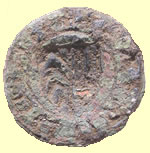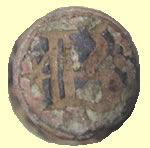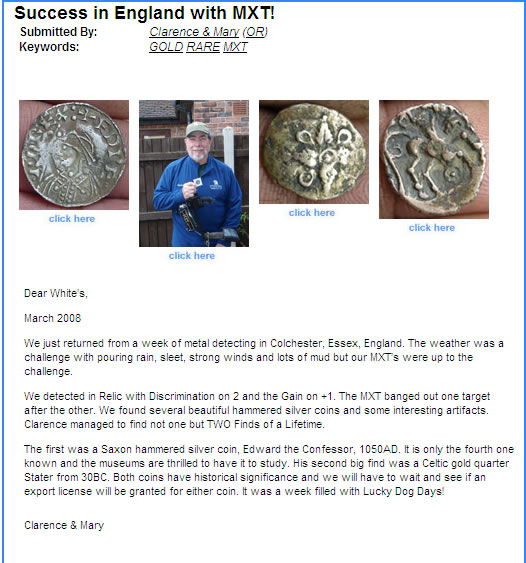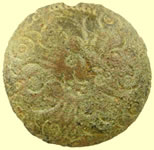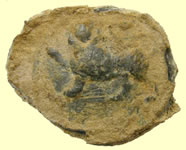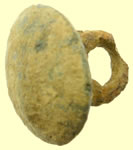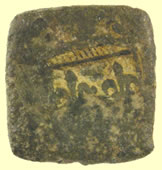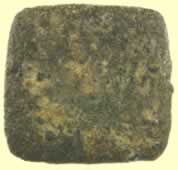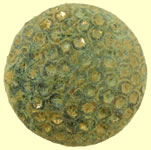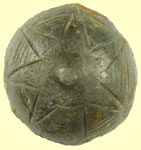- News
- Finds
- History
- Holidays
- Arch'gy
- Exporting
- Treasure
- Awards
- Tips
- Comps
- Forum
- Club info
- Contact
 |
Metal detecting holidays in England with the Worlds most successful metal detecting club Twinned with Midwest Historical Research Society USA |
News Archieve to June 2008 |
15th June 2008 Cooking Romans and new 'Top of the range' mobiles
Romano/British bronze chisel ? 26.29mm L x26.58mm W X 13.03mm T
I am still working through the last of the exports but getting bogged down by so many interesting pieces that want more research to confirm the ID. More find lists and photo's posted on the members forum. I have a huge bag to take to the museum next week and the bronze age expert has agreed to attend the meeting to specifically look at some early chisel point finds. They have the appearance of bronze age but I cannot find this type in my reference books. I will take a stab at Romano/British so it will be fascinating to see what the final dating is. They have come from our new site we only started hunting the last 3 weeks of last season that produced large numbers of Roman and medieval artefacts. It is possible that this chisel is even of the medieval period. That 'crispy' Roman silver find is still 'cooking' and has been on the 'burner' for over 2 days now. The crust on this silver is as hard as rock but tons of grunge has floated off so far. When you use this method change the 'mix' every 8 hours as it becomes clogged with particles. The olive oil is there the carry the particles away. You can tell it is a Roman silver by the colour of the 'grunge' coming off which is very dark brown. It you tried to cook a Roman bronze by mistake then there is no reaction and the liquid remains clean. The trick with this technique is patience, it may take 7 days to finally get through this crust but I reckon that there is an early Republican BC coin under it. It will be a bummer if it is blank !
BC Roman silver ? As dug to 3 days of 'cooking'
More of our medieval finds uploaded to the database
However teams of guys ( 3 to 6 guys) that want a real cheap deal can use the mobiles and eat lots of fish and chips and chinese takeaways . I was just booking guys at the usual site we use and they have now added a brand new top of the range unit that looks really smart at no extra cost. It now includes, microwave, DVD player etc. Remember when staying at the mobiles you still pick from the same 200 + fields as the rest of the guys, same exporting and ID facilities but you have your own car to come and go as you please and hunt as many hours as your arm will hold out
|
||||||||||||||||||||||||||||||||||||||||||||||||||||||||
13th June 2008 More finds and uploads Some more great bonus do dads in the export bags including what 'feels like' an early Roman silver coin posted below. There is no detail on it but it has the right weight and 'feel' of an early Roman. I have it 'cooking' trying to remove what appears to be 'horn' crust. I cleaned up several other lumps and was surprised to see an early pewter Lion type stud which could well be off an Army collar. If anyone can ID it drop me a mail please
19th Foot - The Green Howards Firmin & Co c.1800-1811
A special thanks to Tim as his research finally paid off and he just sent me this ID of one of our unrecorded military button finds. 19th Regiment of Foot - The Green Howards. Great history of the regiment. Regiment web site 1744 - The regiment took the nickname of Green Howards in Flanders during the Wars of the Austrian Succession. As there were two regiments each commanded by a Colonel Howard, both being known as Howard's Regiment. To avoid confusion, the 3rd Foot (Thomas Howard) was named the Buff Howards, and the 19th Foot (Charles Howard) the Green Howards after the colour of their regimental facings worn on the collar and cuffs. From then on the Regiment were also knwon by the nickname of "The Green Howards". 1745-1747 - King George's War - Battles of Fontenoy, Roucoux, and Lauffeldt 1751 - In July, the naming of regiments after the surname of the Colonel was dropped to be replaced by the numbering system. From this date it was called the 19th Regiment of Foot. 1761 - Battle of Belleisle (Seven Years War) 1781-1782 - American War of Independence. Present at the Battles of Quinby Bridge, and Shubrick's Plantation, and Eutaw Springs. 1782 - The Regiment first became associated with, and affiliated to, the North Riding of Yorkshire when it was granted the title of "The 19th (First Yorkshire North Riding Regiment) of Foot". 1854 - The Crimean War breaks out. Regiments sees action at the Alma, Inkerman and Sevastopol.
More of our medieval finds uploaded to the database
|
||||||||||||||||||||||||||||||||||||||||||||||||||||||||
12th June 2008 - More potential treasures and unpublished finds
More of our medieval finds uploaded to the database
|
||||||||||||||||||||||||||||||||||||||||||||||||||||||||
11th June 2008 E-mail is still down - server is faster I noticed the Colchester e-mail address is still down while the transfer takes place to the new server. Should be back working soon. The new server appears to be a lot faster even on the huge pages of finds.
I have updated the free forum competition page with the latest guesses, remember you have to have you guess logged by the beginning of the new season on Sept 6th to win the free trip.
|
||||||||||||||||||||||||||||||||||||||||||||||||||||||||
10th June 2008 New server on line Our server that this web site used ran out of space yesterday so I had to delete the whole site today and upload it to a new super server. I though we would loose this site for for up to 72 hours but it is now back working within a day, amazing. We now have 4 GB of disc space to upload our find pictures to, guys reckon they will fill it up next season !!. |
||||||||||||||||||||||||||||||||||||||||||||||||||||||||
5th June 2008 More updates and unpublished finds Uploading more of our Medieval finds to a new photo album on the foundintheground database.
Tim sent me an ID of yesterdays button and it is a really nice early example. He also informed me that the 87th Regiment of Foot button is in fact the Royal Irish Fusiliers. He has listed one of those below I sent him for ID as an unknown Corp, great find.
|
||||||||||||||||||||||||||||||||||||||||||||||||||||||||
3rd June 2008 Land and more finds
I am still very busy just concentrating on processing the exports so I have not had chance to look at the two new sites on offer for September yet. I have about 2 weeks worth still to do yet and will then go roaming as there are two other potential sites boarding our productive area also to view. Members have been 'googlearthing' the sites and found some amazing crop marks on the fields, details on members forum. Tim our resident button expert has just produced two great new books and included all our unrecorded examples in there. These are ' must have' books if you are serious about your buttons. I use all of Tim's books as the 'bibles' for our button finds. Contact Tim direct to order your copy.
Though the playing of the teetotum (dreidel) originated in medieval days and was very popular in mid-nineteenth century London under its name, derived from the letter T on one side, meaning totum ("take all"), A dreidel (Yiddish: דרײדל dreydl, Hebrew: סביבון Sevivon) is a four-sided top, played with during the Jewish holiday of Hanukkah. The dreidel is used for a gambling game similar to Teetotum. Each side of the dreidel bears a letter of the Hebrew alphabet: נ (Nun), ג (Gimel), ה (Hei), ש (Shin), which together form the acronym for "נס גדול היה שם" (Nes Gadol Haya Sham – "a great miracle happened there"). These letters also form a mnemonic for the rules of a gambling game played with a dreidel: Nun stands for the Yiddish word nit ("nothing"), Hei stands for halb ("half"), Gimel for gants ("all"), and Shin for shteln ("put"). In the state of Israel, the fourth side of most dreidels is inscribed with the letter פ (Pei), rendering the acronym, נס גדול היה פה, Nes Gadol Haya Po—"A great miracle happened here" referring to the fact that the miracle occurred in the land of Israel
17thC copper alloy ring with heart design
17thC copper alloy ring with hatch design
|
||||||||||||||||||||||||||||||||||||||||||||||||||||||||
31st May 2008 Letter from Coroner - Roman fort found ? Any chess buff's out there that can help date our chess piece finds ? I can find no equivalent styles to date the ones we have found. I have posted it on our Foundintheground forum if you can help ID it. I have also started a new photo album of our gaming piece finds on the site. Remember there is a free find tray if you can ID any of the unknowns posted on the forums.
I received a letter today from the Coroners office detailing the feedback from the British Museum on 8 of the outstanding treasure cases. 6 have been disclaimed and two have gone forward for a Treasure inquest. The disclaimed items will be returned to the finders, list posted on members forum.
Gratian (370's AD) and probably from Trier'. Coins finds range from the whole period of Roman occupation including that incredibly rare 4th C Roman silver coin find. I just got the ID on one of the Roman bronzes above I sent to our expert Mark.
Huge 1st/2nd Roman bronze coin send off for ID 33.28mm dia ,4.18mm Thick , 20.41g 'From the size and weight, it must be a Sestertius. Although, as you note, there's not a lot to go on here except that it's a female portrait, the bun at the nape of the neck suggests Faustina II, wife of Marcus Aurelius, Lucilla, wife of Lucius Verus, (daughter of M. Aurelius & Faustina II and sister of Commodus) or Crispina, wife of Commodus. Those are the three most commonly encountered female characters on coins of the later 2nd century who typically were portrayed with their hair in a tight and low bun, in about the order of how likely they are to be encountered.
So although there's little else I can tell from what I can see, it's a fairly good bet that it's an Antonine-era sestertius of one of the Imperial women, c 150-190 A.D. (Antoninus Pius minted some coins in honor of Faustina II before Marcus Aurelius succeeded him as Augustus in 161)'
Mark
I have got a real feeling that this is perhaps the Roman Fort or settlement site that our previous farmer thought was his land but is in fact on the next fields over. There have been a series of plates fragments like 'Kalkriese' strap fittings. This coming season we will get a far better picture when we get to detect the other dozen fields on the site not yet searched.
|
||||||||||||||||||||||||||||||||||||||||||||||||||||||||
28th May 2008 Pressed mounts and more unpublished finds More find lists and photo's posted on the members forum.
These pressed copper mounts we find are earlier date wise than their construction appears to be. They have a single pin fixing and I have always attributed them to post medieval. However the one below is of the medieval period and quite a rare find being attributed to the 'Knight of the Order of the Holy Sepulchre'. I expect the other cross types we have found can also be linked to holy orders and I will be researching them some more, very interesting finds.
Ref Mitchiner p244 939 - 941
|
||||||||||||||||||||||||||||||||||||||||||||||||||||||||
26th May 2008 More unpublished finds
Romano/British bronze chisel ? 26.29mm L x26.58mm W X 13.03mm T Some great bonus do dads lurking in Ohio Jerry's finds pouch. I especially liked the Medieval seal matrix hiding in his button bag, great looking button LOL. I have a whole bunch of finds bagged up to take into the museum for recording and further ID. Especially interesting is the number of bronze chisels being found in the 2nd half of the season. These are really tricky to date as they were used from the Bronze age right through to medieval period. Colchester museum has an especially good Bronze Age expert to try and date them. More export finds lists posted on members forum.
|
||||||||||||||||||||||||||||||||||||||||||||||||||||||||
25th May 2008 More kit ordered and cleaning tips
Tim has sent me the ID of the 20th Regiment button below and I have retaken the photo's of Christies Roman votive offering to show more of the detail. I have posted more export finds lists onto the members forum.
20th Regiment of foot button East Devonshire O/R 1830-55
Roman 1st/2ndC copper alloy votive offering 7.63g, 39.43mm H x 5.09mm T |
||||||||||||||||||||||||||||||||||||||||||||||||||||||||
24th May 2008 Exports approved - more unpublished finds I have started a new page on Spindle Whorls with pictures of how the device is used. I will be posting more of our interesting examples to that page. I received a large batch of approved export licenses in the post this morning, list posted on members forum. I have just posted more finds lists with photo's onto the forum. Tenn Mark found an amazing number of interesting artefacts I am still playing with including this weird looking rock that I do not have a clue about. I have a huge batch of find to drop into the museum next week so I will include this rock for their views.
|
||||||||||||||||||||||||||||||||||||||||||||||||||||||||
22nd May 2008 More tips and unpublished finds
I have posted more machine settings and tips to this page detector page/tips. Tenn Mark had some great unpublished pieces in his export pouch and what could be a very important spindle whorl find with early writing around it. I will be dropping it in to the museum with a pewter phallic symbol for their views on date. Full find lists and pictures posted on the members forum.
Straightened 1272 - 1301 Irish Edward 1st hammered silver penny 1.32g,19.35mm CIVI/TAS/DVBL/INIE - Dublin mint |
||||||||||||||||||||||||||||||||||||||||||||||||||||||||
20th May 2008 Buttons and excellent silver coin repairs This hammered cut half found by Penn Dennis was so badly split that I could not clean it properly as it would fall apart. We decided to use it as a test piece to see what could be done the rejoin the two pieces of a hammered silver. What an amazing job he did on the coin as even blowing up the picture up you can hardly see the silver solder. When the solder tarnishes it will be almost undetectable. What an amazing result and we can use this technique on other broken hammered silver coins now. I have posted a load more of the fixed coins on the coin straightening page.
Repaired 1199 King John hammered silver voided short cross cut half penny Obv. Rev Moneyer ABE(L ON LVND - Abel , London mint Class 5c
Tim Burton our button expert has been working on the unrecorded button finds and has drawn the example to make it clearer. The symbols around the centre circle look like cannon ends so is this a Navy artillery button ? Tim is beavering away to ID it. Tim currently has a dozen on line military and Navy button books I use but has just produced a new hardback book. Contact Tim for more info on the books info@hamwichouse.com. 'I've just published a colour book on Police Collar and Lapel badges, from the 1800's to the 2000's, (those annoying one's with just the coat-of-arms or some obscure Latin legend).'
Unrecorded button - managed to get a back mark off it for date Firmin & Co c.1800-1811
'This is quite a rare type, as you no doubt appreciate. The best parallel is provided by three coins in the British Museum, listed in their catalogue as nos. 3353-55. It's one of a group of coins loosely described as the Snettisham staters, because several of the types were first recognized in one of the Snettisham (Norfolk) hoards of the early 1990s. The exact type is not in Van Arsdell although it's closely related to the North Thames types listed as VA 1500, 1502 and thereabouts. It is presumably an East Anglian type, although because of the stylistic similarities there must have been some very strong link between the producers of the Snettisham types and the North Thames types. Date c. 50 - 40 BC, I think. I'll record it as CCI 07.1164. '
One of our Senior members Nova Scotia Andy has made a major find back in Canada, 1795 Flowing hair USA dollar. Flowing Hair dollars were only minted in 1794 and 1795. There were only 1,758 minted in 1794 and 160,295 minted in 1795. He also got a 1787 Fugio cent on the same site. It was certainly Andy's year as he found his first ever rare gold coin here as well in Sept, congrats on a great find. Full details and story on the members forum. More before an after shots on the coin straightening page.
1526-9 Henry VIII hammered silver groat - Rose mintmark - Type B - satires in reverse cross ends - Tower mint
501 -1507 Henry VII hammered silver half groat - York Episcopal mint, Archbishop Savage, key each side of bust , double arched crown 1.24g, 18.26mm Obv HENRICUS DEI GRACIA REX Rev CIVI/TAS/EBO/RACHI - York |
||||||||||||||||||||||||||||||||||||||||||||||||||||||||
19th May 2008 - Coins fixed and a monster gold find - Buttons ID'd I picked up our coins from the goldsmith today and I was shocked at what he uncovered when he straightened that rolled up hammered gold Canadian Criag found. It is about a 1/3rd of a monster sized 14thC hammered gold noble. The rest of the coin must still be out there on that field !!! He made a simply amazing job again of all our bend and damaged coins and I will post all the hammered silver he also fixed later.
Amazing discovery - this rolled up coin turns out to be part of a monster sized gold coin, Edward III 1351-52 full noble, closed E & C type approx 36mm dia 136.7 grains. note the straightened 1/4 nobel for size comparison.
Before and after shots of the Fourth coinage 1356-61 Edward III hammered gold 1/4 Noble Type C Annulet stops 1.96g, 20.36mm found by Idaho Gene
Before and after shots of the 388 AD Roman gold solidus Theodosius I found by Billericay Mark
RN Greenwich Hospital Service - Staff tunic button In use 1814 - 1869
|
||||||||||||||||||||||||||||||||||||||||||||||||||||||||
18th May 2008 POW site finds - Detector settings page updated More find lists and export sheets posted on members forum I have revamped the detector page/tips with the most popular makes and the settings guys are using here, check it out. I have been cleaning up a lot of the cruddy buttons out of the export pouches to reveal some great finds underneath. Our POW site has produced dozens of the Prussian and Royal artillery buttons this season again . However one of the most important regiments on guard duty there must have been the 5th Dragoons guards as the one below is our 6th unrecorded version of this button. There also appears to be large numbers of Navy personal frequenting the site, probably transporting them from the local port. Harwich. The RN Greenwich Hospital Service button is the 2nd from that site so medical personal were also on hand for those that were wounded.
2nd button of this type found 1747, Mr. W. Naggs Charity In 1747, Mr. W. Naggs, by a deed of trust, gave an estate of thirty acres of land at Wickham St. Paul's, for the purpose of apprenticing annually two boys, and educating and clothing four boys, to be chosen by his trustees. In 1754 and 1763, the funds of the charity were increased by legacies and donations from Mrs. Webster, Mr. Gray, Mr. Isaac Boggis, and Mr. Thomas Boggis. In 1 770, Mrs. Edwards left £500 for educating and clothing a boy and girl. In 1787, Mr. Edward Snell bequeathed a sum of meney sufficient to produce £10 per Annum, to be applied in putting out one boy to an apprenticeship. In 1813, Mr. John Round gave a legacy of £50; in 1815, Mr. T. Andrews one of £100; and |
||||||||||||||||||||||||||||||||||||||||||||||||||||||||
14th May 2008 Viking pieces ID'd - more unpublished finds I have reduced this page size to speed up loading times, achived news Oct'07 to March'08 I attributed a coin weight found earlier to the Saxon period due to the classic circle design inscribed on it . This design is used on both Roman and Saxon period items. I have been further researching it and found it matches Viking bullion weights from the Viking Wintercamp at Torksey. Another lead item found at the same site with a flower design is a Viking gaming piece, what great finds. 'The great army of the Vikings spent the winter of 872/873 at Torksey, Lincolnshire. The previous year they been campaigning and over-wintered in London, and the following year they moved to Repton, Derbyshire, where they defeated the Mercian king, Burgred.
This large lead object appears to be map and is from the same site as the two previous Viking pieces. I have been trying to research it more without any success. Is it possible that it is not a map but an early lead gaming board ?
|
||||||||||||||||||||||||||||||||||||||||||||||||||||||||
13th May 2008 More site updates Updated more page with latest finds.
|
||||||||||||||||||||||||||||||||||||||||||||||||||||||||
12th May 2008 Treasure update - CLA membership and more finds
Idaho Ken has received a letter from the British museum about his silver button treasure. In part it reads " A common late 17th Century type button, though the first to be reported through the Treasure Act with this particular design. The handclasp and hearts refer to a marriage as conventional symbols; the heart above suggests a royal marriage. Compare similar buttons with two crowned hearts, thought to refer to the marriage of Charles II and Catherine of Braganza: Treasure Annual Report 2003, no. 224 from the Eye area, Suffolk". A letter from the Assistant Treasure Registrar to Mrs C Beasley-Murray in Chelmsford states that the Colchester and Ipswich Museums are interested in acquiring it. We currently have several of the different types we found on display at the Colchester museum. There are also 3 we found recently that are still going through the treasure process that the museum wish to acquire including the cufflinks below . Check the Hoard & Treasure page for latest updates.
I have posted more full find list and photo's onto the members forum. This was our best season by a mile with number of relics found and some of the guys pouches are amazing.
Generic Merchant Navy Officers
|
||||||||||||||||||||||||||||||||||||||||||||||||||||||||
10th May 2008 Roman ID's back - more unpublished finds Thanks to Mark Lehman for ID'ing more of our unpublished Roman coins below. I have sent Tim another couple of military buttons from NH Scot's pouch I just cleaned up that are not in his books. Amazingly Scott had a CW period Indian head penny in his copper bag in great shape.
Lots of nice blue and white pottery shards out there
|
||||||||||||||||||||||||||||||||||||||||||||||||||||||||
8th May 2008 More land and unpublished finds Yet more new land has been offered to us today for a Sept start around an old 1140 AD Cistercian abbey. More details published on the members forum. More find lists and photo's just posted on the forum. This lead face piece below is very interesting and could be any period, from a site with occupation from Celtic through to medieval. One for the museum to take a closer look at. Idaho Gerry also eyeballed the early 170 million year old fossil on the same site !!
Early lead face 10.52g, 34.12mm H x 28.38mm W
170 million BC fossil - Clypeus Ploti or sea urchin.
C1300 Medieval blue and gold enameled pendant with suspension loop 3.59g, 24.41mm L 13.06mm W x 3.16mm T
I retook this shot of Gerry's medieval hanger to show the detail of the blue enamelled cross better. |
||||||||||||||||||||||||||||||||||||||||||||||||||||||||
7th May 2008 Amazing buttons and unpublished finds I am working through the export pouches and trying to get ID's on outstanding unknowns. I have sent several 18thC Conder tokens off to an expert to see if they can ID them. I have posted more complete find lists and photo's on members forum.
Tim has come back with an ID on a couple of the buttons not listed in his books and they are superb finds. That early Navy is a major find and in good shape. The 4th Regiment of foot apparently lost in the American revolution ! 'Interesting Button.
This lot fought and lost in the American Revolution'.
Tim
|
||||||||||||||||||||||||||||||||||||||||||||||||||||||||
5th May 2008 Exporting and unpublished finds.
Solid silver medieval vessica seal 62.1g, 21.96mm L x 18.81mm x 5.51mm W (excluding hanger) He also has this really neat 4th regiment button, which is not a type in the reference books, and a medieval lead bust mount in his pouch. The style is fairly early as the head dress and chain mail clearly seen on the back of the head could be as early as Richard 1st, C 12thC
Unrecorded 4th Regiment of foot one piece (Kings own infantry) sent to Tim for further info
Circa 12thC lead bust mount, 71.61g, 31.35mm H x 21.62mm W
1– Roman silver Siliqua - VIRTVS ROMANORVM type - Gratian (370's AD) Trier'. 3. - 1413- 22 Henry V hammered silver half penny - Pierced cross initial mark - 0.925 FINE - Type 3, Small whole annulet either side of crown +HENRIC :REX :ANGL Rev CIVI/TAS/LON/DON - LONDON MINT 0.46g, 12.67mm 4. 15th C lead token 5. - 1344 -1351 Edward III Third 'Florin' coinage hammered silver penny Obv EDWAR ANGLE DNS HYB Rev CIVI/TAS/LON/DON - London mint 6. - 1714 George 1st trade weight - Crown G mark - London 7.- 1413- 22 Henry V hammered silver half penny - Pierced cross initial mark - 0.925 FINE - Type 3, Small whole annulet either side of crown +HENRIC :REX :ANGL Rev CIVI/TAS/LON/DON - LONDON MINT 0.46g, 12.67mm 8.1st/2ndC roman bronze - illegible 9.Georgian plain silver button with Lion hallmark 10.- Roman bronze antoninianus of Claudius II, c. 270 AD 11. - 1427-30 Henry VI hammered silver penny 12 – 1649 Commonwealth hammered silver penny 13 - 19thC Russian lead bale seal 14 - Medieval lead trade weight 15 - 1344 -1351 Edward III Third 'Florin’ coinage hammered silver penny Obv EDWAR ANGL DNS HYB Rev CIVI/TAS/LON/DON London mint 16 -Medieval barrel lock fragment 17.- 1855 Victorian milled silver sixpence 18 - 1578 Elizabeth 1st hammered silver three pence 19.- 1674 Charles 1st milled copper farthing 20. - 4, 1790 pattern Royal artillery one piece buttons |
||||||||||||||||||||||||||||||||||||||||||||||||||||||||
4th May 2008 Earlier military button - Books page revamped Uploaded more finds to their individual category pages
Tim Burton has been doing more work into ID'ing the outstanding military button finds. This button is earlier than we thought.
I have updated the book page with the most popular reference books we use with links to Amazon to buy direct Book Page |
||||||||||||||||||||||||||||||||||||||||||||||||||||||||
3rd May 2008 More updates & Global news page - next exports I have mailed out 99 % of the last approved export pouches and am about to start processing the new ones from March. Full finds lists with photo's will be posted on the members forum and any missed finds during the hunts will be posted here. Added another great story to the Global news page. Click here for the links to the main stories Global News
Updated a load more pages below with latest finds
|
||||||||||||||||||||||||||||||||||||||||||||||||||||||||
2nd May 2008 Treasure updates - more finds updates - New forum competition
I have launched next years free forum competition to win a free weeks inclusive trip here. This season you have to guess the number of milled silver coins found here from Sept 2008 to April 2009. Check out the forum competition page for full details. I have updated the Hoard and Treasure page with latest information on our finds. Bill the finder of the locket below has sent me an update from the letter he received form the British museum and it matches the date that I thought the locket to be, great find. "...The find appears to qualify as treasure as stipulated... Colchester and Ipswich Museum Services are interested in acquiring it, and so I would be grateful if it could go forward to inquest." Also enclosed is a report from J. Rudoe, indicating that the locket fragment is 17th cent., is inscribed 'Prepared be to follow me', with initial CR below, and is "A common type of memorial for Charles I, made either during the Commonwealth or after the Restoration. The plaque is probably part of a locket. The same inscription occurs on memorial rings for Charles I."
Mid 17thC Mourning silver token Obv 'Prepared be to follow me' CR T Rev 'I live and dy m loyal ye' 19.88mm L x 19.02 mm W 1.14g
Solid silver decorated pin head 16thC Tudor 1.66g, 9.56mm dia
Chicago Ron's treasure find has been confirmed by the British museum as a Tudor 16thC pin head. The museum however have disclaimed this item and it will be returned to him. Updated the following pages with latest finds.
|
||||||||||||||||||||||||||||||||||||||||||||||||||||||||
1st May 2008 More new land for Sept - more updates and news 9-Year-Old Boy Finds $265,000 Medieval Treasure TroveAnother new site has been added for hunting from the 6th Sept in an important Roman area alongside a river and estuary. It has never been detected before and is a new town for us, Canadian Rod our historian will be doing the research on the area prior to September, more details on the members forum. Check out the land page for an overview of our existing sites. I have updated more pages with the latest finds below. Most pages are becoming too large with numbers of finds so I will be splitting them into smaller categories again. I have sent off all the outstanding Roman bronze coin finds that require ID to Mark Lehman for his views.
|
||||||||||||||||||||||||||||||||||||||||||||||||||||||||
29th April 2008 Page updates Updated the following pages with the latest finds. I have had to split the Edward 1st to Edward III page as it has grown too large with hammered silver coins. The new page is for Edward III only coins.
|
||||||||||||||||||||||||||||||||||||||||||||||||||||||||
28th April 2008 Coin straightening - Irish penny - 'Modern' axe
I have improved the findsindex page to make it easier to navigate and included links to all the individual finds pages. I have also updated the hunt pages index with this seasons individual month pages.
1272 - 1301 Irish Edward 1st hammered silver penny 1.32g,19.35mm CIVI/TAS/DVBL/INIE - Dublin mint - possible contemporary forgery or continental imitation I took a couple of snapshots from the 'New land sucks' video I uploaded yesterday which does not show how cold and festering the day was. We got to the new site and the wind was howling and it was biting cold, I sat in the bus with the heater running as it was truly horrible out there !!. There were half a dozen fields in wheat but the rain made it a total boot sticker. Guys were just finding greenies and trash and were ready to have an early lunch at 11am. NH Dave, one of our most dedicated hunters, even came back to the truck and asked me to hand him a rope as it just sucked his brains out. We were all munching the chow when Oregon Clarence, who was the last to come in, walked up and said I found a hammered silver coin. Expecting an Elizabeth or Charles, Clarence opened up his little plastic finds box, ***** hell Saxon !! The farmer was with us and he said is that good ? Is that good, find of a lifetime and although black you could see the full detail showing through. After sending it off to the Fitzwilliam museum it turns out to be a rare Saxon 1050 AD Edward the Confessor penny that won 3rd place in our find of the year vote. Just goes to show that one swing of the coin makes all the difference to how we view a site. Check out the 'New land sucks' video |
||||||||||||||||||||||||||||||||||||||||||||||||||||||||
27th April 2008 Sal wins find of the year - 'New land sucks' video uploaded
English Saxon Thrysmas gold coin - 'Witmen type' c620 -650 AD - Recorded on Fitzwilliam museum Corpus database as EMC 2007.0302. 1.26g, 11.46mm Val was wearing his 'hat vid cam' when he dug it so watch the video here
2nd place was this beautiful medieval gold ring found by Idaho Travis which is currently with the British museum going through the treasure process - 1.23g, 19.50mm dia
3rd place was this was this rare Saxon silver coin found by Oregon Clarence 1050- 1053 Saxon - Edward the Confessor hammered silver penny - expanding cross type - heavy coinage ? Obv EDWERD REX : + Rev (Wulfsige) ON GIPESWIC (Short cross voided with expanding limbs) - IPSWICH MINT (GIPESWIC) EMC 2008.0136. 1.63g, 19.87mm 'I have recorded it as EMC 2008.0136. The portrait with two toggles on the mantle certainly differs from the types illustrated in North, but these illustrations were drawn in the the early 1960s to show the main types only. There are many variants, and the three other coins of this type, mint (Ipswich) and moneyer 'This is extremely interesting. It is very promising. Gareth Williams has commented that the Ipswich coin 'seems to be from the same dies as one of our [British Museum] coins (1950,6-5, 1) and the same variation in the design is also found on two different obverses of Bruninc of Ipswich. However, it isn't a purely local variation, as the same bust appears on selected coins of Colchester, Gloucester and London, and a related variation at Dover, although these represent the minority of dies from the mint in each Martin Voting was very difficult this season as there were just so many finds to choose and was spread across 13 finds. Another find of note was Penn Christies 11,000 BC Mesolithic axe head.
I just downloaded some old video from my camera of the day we hit some new land. The wind was howling and it was cold and wet. Guys were ready for an early lunch at 11 am as we were finding dick New land sucks video If the streaming server is busy you can download it and play it from your hard drive.
|
||||||||||||||||||||||||||||||||||||||||||||||||||||||||
25th April 2008 Last day to vote - More new land and Rare buttons A excellent turnout by members so far voting for find of the year has produced interesting results. This is the last day you have to vote as the winner will be announced tomorrow. More details on members forum
Unrecorded Military buttons Unknown maker - Jackson 30 Gracechurch St London I got an e-mail in from Howard Ripley about a couple of military buttons we found this season. I thought Hmm 'I know that name' and asked him if he is the guy that has written all those military button books I use. I had already sent these to Tim Burton our button expert and he was unable to ID them and I thought it was horse above a horn. Howard points out it is a lamb ( if your don't cut the tail off a lamb apparently it grows long ). I have asked Howard for his help to ID some more of our unrecorded military buttons posted on our Foundintheground site. If you can ID any you win a free finds tray.
'I think I may be able to help with the identification of a button in your named military buttons section. 'I've now written about half a dozen books on military and police buttons so I guess I am that person!No, the lamb and hunting horn button isn't in any of my books as I haven't seen it before. Is it likely to have been found in East Anglia? Kind regards Howard I have been out and about dropping off picture portfolios of their finds and treasures to our landowners and getting a feel of next years cropping schedules. We are starting detecting slightly later next season from the 6th Sept and it appears that a lot more of the 200 + fields we currently have will be ploughed earlier next season. The bulk of the crops will be cereal again but some of the key Celtic and Saxon sites also have an existing potato crop on them. This is great news as they were ploughed very deeply and we will get two bites at the cherry, firstly when they take off the potato crop and them when they replough and put wheat in. One of our farmers has offered us another new site that a friend owns and I will going to take a look at it during the summer. It is in another new area for us so Canadian Rod our historian will be busy researching it's history. I am also after another site that boarders an amazing new site we started detecting this season that has a medieval village on it. More details posted on members forum. I am still busy posting out all the finds to the guys that got an export license and will be starting on the new export applications shortly. |
||||||||||||||||||||||||||||||||||||||||||||||||||||||||
22nd April 2008 Finds.org - database of finds
The National database where all finds are recorded is finds.org and contains over 300,000 objects. It is superb reference library if you are looking for other examples to help ID any find. If you click on the link below you can see Cal Jeff's Roman 'chicken' find (ESS-CEAA98) now logged by the local Finds Liason Officer. Each item is entered with as much detail as available. If you already have the ESS number of your recorded find then type it in the grey filter box here link. Here are few example links to the entries of the guys finds.
|
||||||||||||||||||||||||||||||||||||||||||||||||||||||||
21st April 2008 Coin straightening and free download of 'Art of Cleaning Roman Coins' book I am getting a large batch of finds from this season together to take to the goldsmiths for repair that include the hammered gold and silver. If you want your find taken in at the same time then drop me a mail or add it to the post on the members forum. We are trying some fairly complex repairs on broken hammered silver coins to see what results we can achieve.
1344 Edward III gold qtr noble - 3.89g
Fourth coinage 1356-61 Edward III hammered gold 1/4 Noble Type C Annulet stops 1.96g, 20.36mm Obv shield quartered with the arms of England and France within a treassure of eight arches - EDWARD GRA REX :ANG. . HY Cross 3(4 ) Rev EXALTABITAR IN GLORIA
Theodosius I- solidus - 388-392 AD 4.40g, 20.26mm I just got an amazing mail in from the guys at the URF on how to clean Roman bronzes effectively. This is an 'art of cleaning Romans' .pdf document and is 4 Meg in size. It has full coloured photo's with pictures of all the tools needed, techniques with before and after shots of coins. This is a must have document and free. Art of cleaning roman coins download |
||||||||||||||||||||||||||||||||||||||||||||||||||||||||
20th April 2008 Great end to the hunts - Awards and forum competition
1592-5 Elizabeth 1st hammered silver shilling (12 pence) 6th issue - Tun mint mark Celtic gold eluded Val in the end but he managed to pull up a hammered Elizabeth 1st shilling on his last days hunt as a bonus , great find . I will be posting the last of the finds on the latest hunt page. That's it now until Sept when the hunts restart and the all the fields are re ploughed and we are back to square one again.
I will now be preparing all the export papers and posting the missed do dads here as I go through them. The win a 'free weeks holiday' forum comp was won by 'dirtgrubr' with a guess of 334 hammered silver coins found, actually number in the end was 335 which is an amazing total. Keep an eye on the site as I will be launching next years competition shortly. It will be to guess the number of milled silver coin found in the season 2008/2009 and the prize will be a free weeks inclusive holiday again.
The voting for 'find of the year' has started and the results so far are very interesting with 4 finds splitting the votes equally. The winner gets the silver urn and a free weeks holiday next season. Make sure you get your vote in by 28th April to have your say please. Please select any find from this season hunt pages
The 'prolific coin hunter' award will be announced after all the export contents have been processed and counted. |
||||||||||||||||||||||||||||||||||||||||||||||||||||||||
18th April 2008 Interesting ring and Beehive
17thC base metal ring with glass stones |
||||||||||||||||||||||||||||||||||||||||||||||||||||||||
15th April 2008 The boys get well skunked
Val took a great picture of his son after he got his brains sucked out completely on a new field.
The two Cal boys just have a few more days to alter the current leader board for this years free competition. The current hammered silver total stands at 334 which puts 'dirtgrubr' in the lead. Toronto Boris's guess is 342 so it is gonna be close if the boys can bang a few more hammered silver in before the close of the season this Friday. |
||||||||||||||||||||||||||||||||||||||||||||||||||||||||
14th April 2008Debased silver and more gold This early Roman silver is proving to be fascinating as it 'cooks'. It is badly debased silver and laminating badly, almost like different layers of silver hammered together. I have sent it off to our Roman expert and here is his views. 'From the shape of the head (only, as that's all there is to go on at this point) this appears to be a denarius of Antoninus Pius - 138-161 A.D.
I can't tell you why it's laminating so badly - some coins do and some don't - it doesn't have the look of a contemporary copy or forgery at any rate, so far as can be ascertained in its encrusted state.'
There is still some more 'cooking' to be done on the back but some of the layers peel off as the crud is removed.
Debased Roman silver - laminating badly Cal Val continues to hunt for Celtic gold as he is on a mission for one this trip. He came running over and I thought he had done it, it was still a great find, gold Georgian cufflink half. What is more amazing is Min Mindy got the other half of that gold cufflink in the same general area last year so we have the pair !!
Solid gold Georgian cufflink |
||||||||||||||||||||||||||||||||||||||||||||||||||||||||
12th April 2008 Final hunt of the season - Another crusty Roman silver - Fantastic tudor fastener Just a couple of Cal guys here for the last hunt of the season with the 200 fields to themselves. Cal Jason pulled up another Roman silver with the thick 'horn silver' growing on it. Early Roman silver suffer badly from this growth. Check out the cleaning tip page on how to 'cook' this crust off to reveal a perfect Roman coin underneath. Other great finds included a stunning enameled Medieval harness mount, some great lead tokens from 15th to 17thC and hammered silver. I have posted more finds to the latest hunt page.
A beautiful 16thC Tudor rectangular headed fastener with a raised central box section . Complete and undamaged with much of the original gilding 2.24g, 25.02mm L
Roman silver 'cooking' to remove crust
Medieval heraldic enameled mount |
||||||||||||||||||||||||||||||||||||||||||||||||||||||||
11th April 2008 More exports, Celtic gold feedback - Finds ID'd I have posted some more finds including a real nice Henry VIII hammered silver groat onto the latest finds page. 3 more export licenses arrived today and the names are posted on the members forum. I picked up a host of finds from the museum that have been ID'd and entered onto the National data base, I will post a few of the interesting ones tomorrow. Great feedback on the Celtic gold stater found a couple of days ago from Dr Philip at the CCI.
'Thanks for this, a fine Cunobelin linear stater indeed. There are a few with the pellet over the M within the group listed as VA 1925.05 in the online CCI, at Among these coins such as Got the 132BC Roman silver finally 'cooked' to reveal the helmeted bust, coin is simply stunning.
I managed to 'cook' the second Roman silver and found it also mint underneath. Mark has just sent me some fascinating info and ID on the coin which 14-37AD Tiberius.
1.46g, 17.40mm It's a denarius of Tiberius, 14-37 A.D. This is virtually the only type of denarius Tiberius struck. He was not a particularly imaginative or engaged emperor, he didn't really want to be emperor to begin with, and after setting things up in Rome to run thmselves - not always wisely if you recall the story of Sejanus - he retired to his villla (and his debaucheries, if historians of the era are to be believed) on Caprea, never to return to Rome. Since the "historical" ministry and death of Jesus is traditionally said to have occurred during his reign, it is this type which is known (for no real good reason, since other types were equally as likely to have been in circulation in early 1st century Judea) as "The Tribute Penny", after the parable in Matthew. Personally, I tend to feel that this is mainly a marketing ploy to increase the selling price of a very common coin which would be a lot less expensive were it not for the Biblical hype - IOW, the ploy works, and they are very much in demand by non-collectors as well as those who do collect Roman coins.
Here's a picture of a whole one for comparison's sake:
Why this is only half a coin is perhaps more interesting. Although halved and quartered AE Asses of this era are fairly common and are to be presumed to be ad-hoc substitutes for scarcer Semes and Quadrantes as change in trade, I have seen very few denarii which seem to have been halved deliberately. Given that the halving of British pennies was so common in the medieval era - and the cross device on them was considered and used as a "cut along this line" sort of indicator, I'm not sure why Roman denarii seemed not to be cut often - perhaps it was out of respect for or a desire to avoid (and/or a law prohibiting) defacing of the all-important Imperial portrait. Quinarii (half denarii) of this era are rare to non-existent, so we must assume that Sestertii, Dupondii and Asses served normally to make change for a denarius.
I have to guess that this piece was broken in the ground rather than in circulation.
Mark
|
||||||||||||||||||||||||||||||||||||||||||||||||||||||||
9th April 2008 Stunning gold ring and Liberty 3 cents - More exports back Another large batch of export licenses arrived today and the names are posted on the members forum. Striking gold ring find by Cal Val, looks like pure ancient gold but I have not seen a ring with this construction, could be Roman, Saxon or Medieval. I have reported it as treasure to the museum and it will go on to the British Museum for further tests and dating. 26.97mm, 4.77g.
Reported as treasure to the museum and will go on to the British museum for tests and dating. 26.97mm, 4.77g
Great find by an old church 1830 USA Liberty 5c coin |
||||||||||||||||||||||||||||||||||||||||||||||||||||||||
8th April 2008 Exports approved - Roman silver find ID'd as 132BC - uploaded more finds A large group of approved export licence's arrive this morning, full details on members forum. A series of items that the British Museum wishes to look at further, that are potential treasures, are also posted on the members forum. I will be dropping those in to the museum next week and picking up our last batch of 350 finds which have just been recorded by them. Viking coin Hoard found in Sweden
Before and after of the 'cooked' 132BC Roman silver
Finally managed to get the back of the silver Roman clean enough to send it off to Mark Lehman to get an ID. It is till 'cooking to reveal the bust properly. What a stunning coin. I still have another one 'cooking' but it is slow going to get the crust off. It's clear enough now for a positive ID - it is definitely a Roman Republican Denarius - moneyer: M Aburius M.f. Geminus, 132 B.C.
RSC-Bab Aburia 6, SR 127, Syd-CRR 487.
You should, eventually, find the letters: "GEM", behind Roma's helmeted head on the obverse, and there should be an asterisk-looking mark under her chin which is actually a monogram of XVI - ie: 16 Asses to the denarius. On the reverse, you have radiate Sol driving a fast quadriga right and brandishing a whip, below the horses, you have M ABVRI with the AB and VR in ligate form, ROMA in the exergue.
Very interesting, as this piece dates to a century and three-quarters before Claudius' conquest of Britain. I'm going to guess that it originally came to the island in trade for tin, or was carried as a good-luck piece by a superstitious soldier all those years later. These certainly weren't normal, circulating pieces anywhere else in the Empire in the late 1st through early 3nd century era we associate with a significant Roman presence in Britain and circulating silver. These were "overweight" by the standards of the denarii at that time and after Nero's debasement, the silver was too pure also - these would have been pulled out of circulation wherever anyone knew that their silver value was well above their nominal denomination - the sort of information that any savvy merchant would have been aware of.
Mark
Posted more finds to the March 2008 finds page 2 |
||||||||||||||||||||||||||||||||||||||||||||||||||||||||
6th April 2008 Find of the year - forum competition What a great find by Cal Dan, stunning 10 to 40 AD Cunoblein Celtic gold full stater. It has a very interesting die type as it has the cross below the CA and a dot also above MV which is not in the die types of the R Hobbs reference book. I have just sent it of to Dr Philip at the CCI for his views and recording on the Celtic Coin Index.
Cunobelin Celtic gold stater 5.44g, 17.89mm - Northern Gold 'Linear type' Obv corn ear,to 1 CA, to r.MV, below CA cross Rev horse r ., pellet, leaf q & pellet, below CVN, pellet boarder va 1925 Ref Hobbs Updated the find of the year page. At the end of the season every guy that comes here gets to vote for his personal favourite find throughout the season (not his own finds of course) The find with the most votes gets the holder a free weeks detecting next season and the engrave Roman jug, not forgetting his name on the role of honor shield ! Those on the page are not the definitive list but are a few of my current favourites, guys can vote for any finds that are on my site for the season 2007/2008. Updated the forum competition page with the latest hammered silver count, 319. 'Rodbuster' is winning at the moment
|
||||||||||||||||||||||||||||||||||||||||||||||||||||||||
5th April 2008 Roman silver feedback - Continental silver ID'd
This button is a stunning early 1776 pattern 20th Regiment of foot button and is listed in the Don Troiani 'Buttons of the Revolution' book Ref B20e, Saratoga battlefield NY and Georgia. Great find by Tenn brad.
I am still 'cooking' the 100 BC Roman silver find and finally after 4 days the horse detail is showing through, the coin looks to be mint under the 'crust'.
C100BC Roman Republican silver coin
1763 Continental silver coin - 22.30mm, 16.7g 6 Groszy from Danzig (Gdansk) under Polish rule and the King August III. Mark Lehman has sent us this great feedback on the 32 BC Mark Antony, Legionary silver Denarius find. Another Roman silver coin was found yesterday again badly encrusted with 'horn silver' so it was straight into the 'cooker'. I suspected it might be a legionary denarius. By virtue of being of lower-grade silver at the time of their issue, they escaped the normal fate of the melting pot to a greater extent than other, contemporaneous denarii - folks having saved them back at first (like the proverbial "bad penny") because they were somewhat base and undervalue, then, as the regular Imperial issue denarius was repeatedly debased, they suddenly became the purest silver in circulation and were in great demand in the hinterlands where the idea of token AE money hadn't quite caught on yet. They're regularly found in hoards, particularly in Northern Gaul and Britain, with deposition dates well-into the 3rd century - these were a particularly long circulating issue and consequently are often found in very worn, barely identifiable condition.
Yours is actually in pretty nice shape, comparitively speaking - I assembled a gallery of images and measurements of mostly very worn legionary denarii a few months back for Robert Kokotailo who was doing a study of the type. I just put up all the images of coins for which I had metrology - at: http://www.stoa.org/gallery/album357
Mark |
||||||||||||||||||||||||||||||||||||||||||||||||||||||||
4th April 2008 'Cooked' Roman ID'd - more great finds The coin below is very slowly 'cooking' to reveal the detail and is a 32 BC Mark Antony, Legionary silver Denarius.There were three legions named as follows: Legio XII Antiqua, Legio XVII Classica and Legio XVIII Libyca. Can Bill found another Roman silver which is now in the cooker.
32 BC Mark Antony, Legionary silver Denarius. ANT.AVG.III.VIR.R.P.C Galley, Legionary Eagle between two standards
Legionary Denarius Antony needed enough coinage to be able to pay 160,000 men. This is of course if to assume that the payment to the troops remained the same as it was during the reign of Caesar, and namely 10 asses (bronze Roman coins), per day for a soldier or 30 asses a month. Legions received payment every 4 months. Denarius' denomination was 16 asses. The coins that were given to the Legions had a special design featuring a warship obverse and a legend that read ANT. AVG. III VIR. R.P.C. The reverseof these coins depicted Aquila between two standards with the number of the legion ("LEG" NNN). The number was struck across the field at bottom. The three legions that received particular names received coins with a bit different design. The coin above depicts a typical example of a Legionary denarius. Sometimes the Roman coins were struck out of debased 90% silver. I have just posted a few more finds including the first of two really crisp Venetian silver soldinos found.
(1501-1521). Rev: LAVS TIBI SOLI (Thee Alone be Praised). Haloed figure of Christ holding a cross.
Copper alloy pouring bowl with suspension loop- possible Roman - one for the musuem to look at |
||||||||||||||||||||||||||||||||||||||||||||||||||||||||
3rd April 2008 'Cooking' coins - More Roman silver finds - Another fossil
Lots of nice clay pipe bowls and stems turning up
Canadian Bill's 60 million year old fossil find
Before and after pictures - still 'cooking' it This Roman coin above has been 'cooking' for 3 days now and it has the hardest 'crust' of any Roman silver found here. It is slowly coming off but it appears to have two layers of crust, you can see on the reverse a Roman galleon appearing through the second layer. I thought this might be another rare 4th Century example but Mark Lehman sent me this reply. 'A Galley is an extremely unlikely reverse subject for a 4th century siliqua. In fact, without looking, I'm pretty sure a galley was never a reverse type on any siliquae. The more likely silver coins to portray a galley are the very common denarii Marc Antony minted to pay his troops and sailors for the battle of Actium (which they lost rather badly to Agrippa and Augustus' forces, leading directly to the end of the Republic and the beginning of the Imperial age). Hadrian had a common denarius with a galley reverse, and since Lucius Verus and Commodus had some fairly common AE's with galleys, even though I'm not personally familiar with a denarius with a galley for either of them, I wouldn't be surprised if one existed - in fact, as both were closely associaed with Marcus Aurelius, I would also not be surprised to see one for him as well. There quite likely are other folks among the Roman dramatis personae who also put galleys on their silver coins - Allectus is one person whose AE and billon coins are particularly associated with Britain and on which galleys are commonly found, but these are unlikely to be mistaken for silver.
I'm eagerly awaiting an opportunity to see this piece.'
Mark.
BC Roman silver coin Canadian Bill found this Roman silver above that could be an early BC example, you can see a guy on a horse or chariot on the reverse. I have this 'cooking' and the detail is already showing through. I also had to 'cook' a couple of early milled silver coins that had rock hard baked on green crud. They are continental issues so the silver is of poor quality. I have managed to ID one so far, if you know the ID of the other then drop me an e-mail please. I have posted more finds to the latest finds page March 2008 finds page 2.
1763 milled silver continental coin - German ??
Used the Roman silver 'cooking' method on this coin to removed the baked on green crud 1763 Prussian milled silver coin -1/48th Thaler Obv 18 EINEN REICHS THALER IDI 17.07mm, 1.14g |
||||||||||||||||||||||||||||||||||||||||||||||||||||||||
2nd April 2008 Getting to grips with new photo set up - more neat finds Ancient gold necklace discovered in Peru Mass Bruce found a few really neat artefacts on the same site , 60 million year old fossil he eyeballed and a stunning serpent headed Roman knife pommel. He also got a Celtic looking bronze, crisp Roman bronze and a possible Roman silver that I have just put in the 'cooker'. I have posted more finds to the latest hunt page March 2008 finds page 2
60 million year old fossil
4thC Roman bronze sent off for ID-13.75mm, 1.08g
Roman bronze serpent headed dagger pommel 23.18mm L x 11.88mm T, 17.82g
Superb 16thC Tudor fretwork button
|
||||||||||||||||||||||||||||||||||||||||||||||||||||||||
31st March 2008 Brooch ? - Stonking Saxon key - More nice silver and cooking
Two continental silvers 'cooking' to remove the baked on crud NH Scott and Mass Mike found these two great finds on a site that had occupation from Roman, Saxon, Medieval through to Tudor periods. The key is obviously Saxon but the brooch could be any period. I reported it to the museum as potential treasure as it has both a gold and silver content. It will be interesting to see what the British museum make of it as I don't have a clue as to it's age. I have posted more great finds to the latest hunt page March 2008 finds page 2
Tiny 1756 George II milled silver penny 0.46g,12.19mm
1344 -1351 Edward III Third 'Florin'coinage hammered silver penny Obv EDWAR ANGLE DNS HYB Rev CIVI/TAS/LON/DON - London mint |
||||||||||||||||||||||||||||||||||||||||||||||||||||||||
30th March 2008 More great finds - using the new camera setup Added a huge testimonial and write up covering the whole of his trip written by Washington Tom - Testimonials These latest finds were taken with our new camera/lighting set up which is quite impressive to use. I still have tons of finds to upload yet taken with the old set up. I have created a new March 2008 finds page to speed up loading,finds uploaded to the new page March 2008 finds page 2
Medieval seal ring, 24.84mm dia
1603-4 James 1st hammered silver half groat - first issue 0.96g, 16.80mm
1413 - 1422 Henry V hammered silver half groat - pierced cross initial mark - Type C (a) Initial cross with pellet at centre, broken annulet to left of crown 1.69g, 22.32mm Obv +HENICxDIxGRA'xREX Rev CIVI/TAS/LON/DON - London mint
|
||||||||||||||||||||||||||||||||||||||||||||||||||||||||
27th March 2008 More great finds and hammered gold - Celtic gold feedback
Just got a mail in from Dr Philip at the Celtic coin Index on our latest Celtic gold qtr stater find. I asked Philip to see if the die on this one matches the one we found on another Celtic village 4 years old. We have found around 30 full staters but only one other quarter.
'Thanks for this. It's doesn't appear to be from the same dies as the earlier example. This one looks a bit less well-engraved, with a rather crudely drawn horse - the body in particular is quite odd, being unusually short and with the big pellet in ring for the chest. But All the best Another hammered medieval gold coin was found yesterday by Canadian Craig and it is complete but badly rolled by the plough. It should straighten up nicely. It is an Edward III 1/4 noble but until I get it flat I will not be able to tell the series. I have posted more finds to the March 2008 Finds page including another silver treasure.
1344 Edward III gold qtr noble - 3.89g
Stunning 1645-6 Charles 1st hammered silver half groat - Tower mint under parliament - Sun mintmark |
||||||||||||||||||||||||||||||||||||||||||||||||||||||||
26th March 2008 Extra - Free find and coin tray competition
|
||||||||||||||||||||||||||||||||||||||||||||||||||||||||
25th March 2008 Phenomenal finds - Book clasp ID' d - More testimonials posted
c 11000BC Mesolithic stone axe head - 123mm L x58.12mm W x 34.5mm T , 257g The guys went on the main central stretch of a new site and is was huge with a dozen fields to hotspot. Canadian Rod's research showed another huge early Manor house site that was once there in the 1700's . That field was is in a rape seed crop and too high to detect on but Rod fancied a wander over just to have a look around for next season. Good job he did as sticking out of the field was the end of this stonking 11000 BC Mesolithic stone axe. It is an absolute beauty and amazingly Penn Christy who found it's bigger brother on a Bronze age village site in Sept was detecting nearby. Rod went over and said I have found the baby version of yours and Christy slapped this Roman copper alloy votive offering statue in his hand. Great finds and I have posted a load more onto the main finds page
Got some more great testimonials in from the guys who just stayed in the Barn house, they were in and out of the Jacuzzi and Sauna like jack rabbits.
|
||||||||||||||||||||||||||||||||||||||||||||||||||||||||
24th March 2008 Van Brent does the double - Treasures and hoards - Festering weather
The boys were out in that blizzard yesterday and deserve a medal for their amazing dedication to detecting in what was festering weather.
Size comparison of a James 1st shilling (12 pence) and a AD 1310 Edward II hammered silver farthing (1/4 penny) New issue with inner circles Type 28g Rev +EDWARDVS REX AN' Rev CIVI/TAS/LOND/DON 0.31g, 11.26mm
I have updated the Treasure and Hoard page with the latest info on new and outstanding items. Several items from the finds deposited at the museum for recording have also been declared treasure being deemed of over 10% silver by weight and over 300 years old. I will post the details shortly. I have also updated the forum competition page with the latest hammered silver count which is now 282, check your guesses here Forum Comp |
||||||||||||||||||||||||||||||||||||||||||||||||||||||||
23rd March 2008 What a crisp Lizzy -posted more finds Just uploaded a load more finds to the latest hunt page March 2008 Finds This huge Elizabeth 1st shilling below was dug by Van Brent at a good 12 + inches down and he got just a whisper signal on his machine, man what a crisp strike on a coin. It is over weight for a shilling at 102gn, it was issued as 96gns. It must have been lost when it was mint as it is 1.24mm thick. If you compare it to the other Elizabeth shilling found Friday there is a huge difference in weight, thickness and wear. It is nearly 3 times more weight in silver, what a great find. 1592 AD shilling - 31.21mm, 6.64g, 1.24mm T 1561AD shilling 29.91mm, 2.24g, 0.44mm T Then this stunning enameled Roman fibula trumpet brooch pops up. This only the 2nd enameled fibula we have found as 99% are the plain bronze type. The guys also got another 6 silvers so it was a great start to the new hunt.
1592-5 Elizabeth 1st hammered silver shilling (12 pence) Sixth issue Tun mintmark (exposed ear type) 31.21mm, 6.64g, 1.24mm T
1561-5 Elizabeth 1st hammered silver shilling (12 pence) 3rd issue Pheon mintmark 31.21mm, 2.24g, 0.44mm T
Stunning 1st/2nd C trumpet type Roman blue and yellow enameled fibula brooch 5.32g, 26.05mm L x 10.48mm W |
||||||||||||||||||||||||||||||||||||||||||||||||||||||||
22nd March 2008 Fresh team in today - Saxon update - Professional kit
I just got another update on that beautiful Saxon Edward the Confessor coin from Dr Martin Allen the Fitzwilliam museum.
'This is extremely interesting. It is very promising. Gareth Williams has commented that the Ipswich coin 'seems to be from the same dies as one of our [British Museum] coins (1950,6-5, 1) and the same variation in the design is also found on two different obverses of Bruninc of Ipswich. However, it isn't a purely local variation, as the same bust appears on selected coins of Colchester, Gloucester and London, and a related variation at Dover, although these represent the minority of dies from the mint in each Martin
We have a fresh team of guys arriving today including Canadian Rod our historian. Rod does amazing detailed research on our sites and produces huge old laminated maps to help us locate the ancient moated house sites, medieval fairs, Roman occupation etc. He is bringing a whole load of important new research for us to drool over ! I have posted a load more finds to the March hunt page .It is really nice to see some 'modern' hammered silver turning for a change. I have added Ohio Jerry's testimonial of his Barn House trip to the Testimonial page.
Scotland 1602 James VI hammered silver Eight Thistle Merk, I shilling and eight pence (20 pence) Obv - JACOBUS 6 D.G.R SCOTORUM Rev - REGEM IOVA PROTEGIT 1602
1649 Commonwealth hammered silver half groat ( 2 pence) |
||||||||||||||||||||||||||||||||||||||||||||||||||||||||
21st March 2008 End of a fantastic 2 weeks - Oregon Clarence finds another stonker, Celtic gold Newbie Clarence on his first hunt here has certainly gone for quality, having already got that spectacular Edward the Confessor hammered silver penny a couple of day ago. What a great find as it is only the second 30 BC Addedomarus quarter stater ever found here, Billericay Mark got the last one over 4 years ago now. What a great find, I just sent it off to Dr Philip at the Celtic Coin Register for recording and his observations on die type. I have asked Philip to check the die type of the other one CCI No 04.0680 we found on another Roman village 2 miles away to see if they are a match.
1.26g, 13.19mm Celtic gold 1/4 stater Addedomarus Floral Trinovantes tribe, 30 BC sent to CCI for recording
Ohio Jerry's first Medieval hammered silver
Gerry is also an experience detector trainer if you want to seriously improve your technique and hone your skills while you are here. E-Mail Gerry |
||||||||||||||||||||||||||||||||||||||||||||||||||||||||
20th March 2008 Saxon coin feedback and more great finds
1356 -1361 Edward III hammered silver half groat - 4th coinage Pre treaty period - Series G (b) annulet stops Obv +EDWARDVS REX ANGL.I.FRANC Rev CIVI/TAS/LON/DON - London mint 3.40g,22.93mm The guys are on fire at the moment and found another great bunch of Medieval silver finds. I have been dealing with the hammered coin expert at the Fitzwilliam museum for the trickier coins not in my books. I could not find an unusual mintmark for a Henry hammered silver half penny coin in North's hammered silver bible, not surprising really as they drew the mintmark wrongly. It does appear correctly as a cinquefoil 'Withers's Halfpennies and Farthings Ed IV - Henry VII, p.33, no.10'. Thanks to Dr. John Naylor at the Ashmolean Museum for his great help. Dr Martin Allen the Saxon expert has sent me this great feedback on the Edward the Confessor find from yesterday. 'I have recorded it as EMC 2008.0136. The portrait with two toggles on the mantle certainly differs from the types illustrated in North, but these illustrations were drawn in the the early 1960s to show the main types only. There are many variants, and the three other coins of this type, mint (Ipswich) and moneyer
Stunning strike on a 1573 Elizabeth 1st hammered silver 3 pence - 3rd issue, acorn mintmark More great finds and coins posted to the latest finds page March 2008 Finds |
||||||||||||||||||||||||||||||||||||||||||||||||||||||||
19thC March 2008 Oregon Clarence finds a stonker An amazing morning on brand new land that should have been dripping in Roman coins next to a huge settlement and it totally sucked. By 11.30 am we were all skunked and going on to a different site and NH Dave had even asked for a rope to hang himself. Then Clarence walked up to the truck as he was the last off the fields and said I found a hammered out there and dropped this mint Saxon coin in my hand, perhaps this site don't suck so bad now What a cracking find and the first of that King ever found here. It is not a match in my ref books so I have sent it off for Dr Martin's recording on the Early medieval Corpus database and his views.
1050- 1053 Saxon - Edward the Confessor hammered silver penny - expanding cross type - heavy coinage ? Obv EDWERD REX : + Rev (Wulfsige) ON GIPESWIC (Short cross voided with expanding limbs) - IPSWICH MINT (GIPESWIC) Sent off to Fitzwilliam Museum and ID for class type and recording 1.63g, 19.87mm
Got tons more of great finds and silver to post yet onto the latest hunt page |
||||||||||||||||||||||||||||||||||||||||||||||||||||||||
18th March 2008 Archived news and more great finds - Silver sizes The guys are still finding amazing amounts of great silver and arfacts on both the new and old sites. We have over 200 fields to try and search so it is a very tall order and some of the sites have not had a foot print on this season yet. I have archived more of this news page so it loads quicker and will create a new hunt page as March finds are huge this season. I have just sent off a series of our hammered silver coin finds to a new Medieval silver coin expert contact at the Fitzwilliam museum. Hopefully he will be able to record and give us more information of those which are unrecorded in any of the major specialist publications. It is interesting to have just found all three of the Edward III hammered silver denominations and compare sizes, weights and thickness. The full groat (4 pence ) is 3.96g, 25.78mm 0.95mm T and the half groat coin (2 pence) 1.96g, 21.78mm, 0.60mm T. The Groat is not much larger in diameter than the half groat but a 1/3 thicker and weights in at nearly twice as much silver, interesting. The one penny is the best deal at 1.38g, 17.78mm so more silver per pence than the other two !! I have posted more finds to the lastest finds page with a ton more to post later
1351-2 Edward III hammered silver groat (4 pence) Series C Mintmark Cross1 - annulet stops, lis on breast Rev CIVI/TAS/LON/DON - London mint 3.96g, 25.78mm 0.95mm T
1351-2 Edward III hammered silver groat (2 pence) Series C Mintmark Cross1 Rev CIVI/TAS/LON/DON - London mint 1.96g, 21.78mm, 0.60mm T
1344 -1351 Edward III Third 'Florin'coinage hammered silver penny Obv + EDWR ANGLE DNS HYB Rev CIVI/TAS/LON/DON London mint 1.38g, 17.78mm
|
||||||||||||||||||||||||||||||||||||||||||||||||||||||||
17th March 2008 Gob smacking Medieval finds and more silver This is simply a stunning find by Idaho Gene. A medieval solid silver vessica shaped seal matrix with a grasshopper and wheat or corn stalk etched into a red stone or glass . Legend is tricky to read but it appears to be :SECRE+SIO (Crown ?) The cross is an Edward III type so probably around 1350 in date. I have just reported it as treasure to Colchester museum and the landowner is thrilled. Se´cre
Solid silver medieval vessica seal 62.1g, 21.96mm L x 18.81mm x 5.51mm W (excluding hanger) If that last stunning find was not enough Idaho Jerry then finds a stunning medieval enameled pendant
C1300 Medieval blue and gold enameled pendant with suspension loop 3.59g, 24.41mm L 13.06mm W x 3.16mm T
1413-22 Henry V hammered silver halfpenny - Type 10 - inital mark roundabout - Annulet to left:trefoil right by hair Obv +HENRIC REX ANGL Rev CIVI/TAS/LON/DON - London mint 12.83mm, 045g I have posted more great silver to the latest hunt page March 2008 Finds |
||||||||||||||||||||||||||||||||||||||||||||||||||||||||
16th March 2008 More amazing silver and artefacts Just uploaded more finds to the latest hunt page March 2008 Finds. The rare double struck Henry VI coin below has two crowns. I have updated the forum competition page with the running total which now stands at 239 but I still have probably another dozen to post yet.
1399 - 1413 Henry IV hammered silver penny - Rare double struck crown Quatrefoil with pellet on reverse Rev CIVI/TAS/EBO/RACI - York mint 0.89g, 16.83mm
1208/9 King John hammered silver penny Class 6a2 Obv HENRICVS REX Rev +WALTE(R ON LV- Walter London 1.43g, 18.64mm |
||||||||||||||||||||||||||||||||||||||||||||||||||||||||
15th March 2008 More great finds and treasure Just reported this 1670 Charles II marriage commemoration silver button as treasure to museum 16.35mm, 1.74g. The museum have several varying examples we have found on display.
17thC silver button 16.35mm, 1.74g found by Ohio Scott The guys are on fire the second half of the season with great finds being made on both old and new land. I am backed up over two days worth of finds yet to post. I just posted another bunch of great finds onto the latest hunt page March 2008 Finds including a neat Medieval seal matrix, more great hammered and milled silver.
1560-1 Elizabeth 1st hammered silver shilling (12 pence) Martlett mintmark 2nd issue - 5.31g, 31.80mm
1247 1272 Henry III hammered silver voided long cross penny - Class Vb WIL/L(M/ONC(/ANT Canterbury mint - Moneyer WIL/LEM |
||||||||||||||||||||||||||||||||||||||||||||||||||||||||
14th March 2008 More great silver finds and stunning medieval gold ring
Stunning c 13thC Medieval engraved gold ring found by Idaho Travis - reported as treasure to the museum 1.23g, 19.50mm dia I am using every specialist book in my arsenal to ID all these widely varing hammered silver coins we are finding. Boston Bud found this early Scottish hammered silver penny with a legend not recorded in my Scottish hammered books. I am going to have to do more reseach on Roxburgh and the moneyers working there. I just posted a load more finds to the latest finds page March 2008 Finds. I still have a ton of great silver yet to upload and more artefacts including another Medieval seal matrix.
Head is facing left with 5 pellet crown Great find - an Alexander II 1214-49 Scottish hammerd penny - rear legend does not match those in reference books- should be PIERIS ON RO - Pierres of Roxburgh - Adam was also out of Roxburgh so the legend looks like the two combined Obv ALEXANDER REX Rev + PERIS ADAM ON ROE 1.24g,17.82mm
1208/9 King John hammered silver shortcross penny - Class 6b2 Obv HENRICVS REX Rev RAVF ON LVNDE - Randvlf the moneyer - London mint 1.31g,18.16mm
1413-22 Henry V hammered silver half penny - Pierced cross initial mark - 0.925 FINE - Type 3, Small whole annulet either side of crown +HENRIC :REX :ANGL Rev CIVI/TAS/LON/DON - lONDON MINT 0.46g, 12.67mm |
||||||||||||||||||||||||||||||||||||||||||||||||||||||||
12th March 2008 Stunning hammered medieval gold find - more Roman ID'd One of the guys has had to drop out due to illness at the last minute so there is free slot on the 5th and 12th April hunt, drop me a mail if you can make it over.
Henry VII 1486- 1504 Obv HENRIC DI GRA REX A** Z FR- Tun Mintmark - Class II Rev CIVI/TAS/CAN/TOR - Canterbury mint 1.37g, 18.94 Another series of amazing hammered silver coin finds yesterday including some rare ones. I have a whole bunch to play with yet that include a Tealby short cross with stars in the quadrants, some really crisp early short cross's with perfect legends to ID the moneyers. If that was not enough Idaho Gene who got that rare Roman 4thC silver a couple of days ago found only the 2nd ever English hammered medieval gold ever found here. It is an Edward III 1/4 Nobel 1356 -61. What a great find
Fourth coinage 1356-61 Edward III hammered gold 1/4 Noble Type C Annulet stops 1.96g, 20.36mm Obv shield quartered with the arms of England and France within a treassure of eight arches - EDWARD GRA REX :ANG. . HY Cross 3(4 ) Rev EXALTABITAR IN GLORIA
Annulet stops Mark Lehman has sent back a bunch of ID's on the outstanding Roman coin finds that I have posted onto the latest finds page March 2008 Finds . I have also posted a load more hammered silver and some great finds to upload yet like a Roman bronze decorated ring.
Rare 4thC silver Roman I have the siliqua narrowed down to a single mint - Milan - and between two emperors - Arcadius and Honorius. Now, the part of the legend that would tell us which of the two it is, of course, is off-flan - Murphy's Law of ancient coins in action. What we can read clearly on the obverse is the 2nd half of the obverse legend:
"...VS PF AVG"
Unfortunately, both Arcadius' & Honorius' names break in the same place and have the same number of letters:
DN ARCADI - VS PF AVG
and
DN HONORI - VS PF AVG
So I think you can easily see where there's room for ambiguity here. Aside from a few letters the names, the coins have identical types, mintmark-styles, etc. By this time there was little energy being devoted to realisim in portrature, so we don't get much help there either - if pressed, I'd have to say I think it might slightly favor the portrait in a photo of an Arcadius siliqua in my book.
So, take your pick, it could be either - looking at the lower seriphs of the 1st half of the legend isn't conclusive - if the 4th character is an "O"", it's Honorius - if an "R, Arcadius. It seems to me, perhaps, slightly more likely to be an "O". - So, we're tied 1 to 1 on the vague, ambiguous clues, too.
In either case, the reverse is VIRTVS ROMANORVM - Roma seated left on cuirass, holding Victory on globe and inverted spear. In the exergue: MDPS for Milan.
If Arcadius (383-408 A.D.), it's RSC 27b, RIC 32b.
If Honorius (393-423 A.D.), it's RSC 59b, RIC 32c
Mark |
||||||||||||||||||||||||||||||||||||||||||||||||||||||||
11th March 2008 More stunning silver hammered Yet more stunning hammered silver being found by the guys and some with perfect strikes. The land conditions this time of year are perfect, moist and flat like pool table so we are getting maximum depth from our machine. I just posted a load more great silver and finds onto the new hunt page March 2008 Finds
|
||||||||||||||||||||||||||||||||||||||||||||||||||||||||
10th March 2008 More great finds I just sent off more interesting Roman bronzes for ID to our expert. I have posted a whole bunch of really nice medieval hammered silver and artefacts to the latest hunt page March 2008 Finds. The first English Edward II Medieval jetton found here based on a hammered silver coin was found by Boston Bud on new land and he also got a rare double struck Elizabeth 1st hammered silver half groat coin.
Fantastic rare, double struck head, 1574 Elizabeth 1st hammered silver half groat
|
||||||||||||||||||||||||||||||||||||||||||||||||||||||||
9th March 2008 Fantastic Roman silver find - Outstanding Roman coin ID's back More nice Medieval hammered silver coins found yesterday taking the running total for the season to 190 for the forum competition. I will try and get more finds uploaded later to the March 2008 Finds page.
I only partially 'cooked' the Roman above as the silver is not as pure as the 1st/2nd C issues. 'Yes, it appears to be a Siliqua - VIRTVS ROMANORVM type - I'm not certain, but I think it's Gratian (370's AD) and probably from Trier'.
This Roman silver find by Idaho Gene is very exciting as we do not find many 4th Century examples, the bulk being 1st/2nd C. I sent Mark Lehman an e-mail saying funny that we don't find many of these and I would 'cook' it first to bring out some of the detail. His reply below was WOW !! He later sent me a sent me a preliminary ID of the coin and is continuing to do more research on it. Wow -the reason you haven't seen any 4th century silver is that, quite simply, there is so little remaining. The Romans were too broke by that time to be able to afford to use silver for money in the homeland. All those copper coins you find are the equivalent of Pound notes or "Fivers" - a fiduciary currency whose stated value in trade is far above any intrinsic value it might have. There was an attempt to restore dependable, circulating precious-metal coins which was fairly successful in the case of the gold solidus which replaced a scramble of differently sized and variously fine "Aureii" from the chaotic end of the 3rd century - and unsuccessful in the case of the Argenteus/Siliqua - the silver was sucked out of the Empire by overseas purchases and military spending, so the argenteus was quickly debased until it was also indistinguishable from AE. The Siliqua became so popular, however, for buying-off the "barbarians" (who wouldn't take copper fiduciary currency as a bribe!) that it eventually stuck and by the middle of the 4th century, siliquae were actually circulating again at a fineness not seen since the time of Nero. (~.900 fine) But it's the eternal fate of good-quality circulating precious metal coins to be the first into the pot when it's time for a re-coining for a different name, country or denomination, so the siliquae of the later 4th century are still pretty scarce.
A couple rulers, Constantius II, Valens, Valentinian, Julin II pumped-out so much silver in siliquae that theirs aren't quite so rare, but as I was told many years ago (and it's a bit of an underestimation rather than an exaggeration) "You'll handle 100 denarii for every siliqua you ever see." It's the truth.
Mark
Just got another big e-mail in from Mark Lehman with ID's and views on all the other latest Roman coin finds. Here is the ID of the 'cooking' silver Roman below, 11AD Hadrian, Mint of Rome. I will post all the bronze Roman ID's on the main hunt page later.
Now, as for your "cooked" denarius - that's a pretty impressive series of before, during and after pictures, by the way - Interestingly, my first guess on this one was Trajan, from the fairly obvious TRAIAN between 11:00 & 12:00 on the obverse. This one, however, turns out to be Hadrian (I seem to be guesstimating one reign early, today. The reverse has FORT RED (Fortuna Reduci) in the exergue and shows Fortuna Redux seated left with right hand on a rudder and holding a cornucopia.
Obverse: IMP CAESAR TRAIAN HADRIANVS AVG, laureate head right, aegis on far shoulder
Reverse: FORT RED (in ex) P M TR P COS II
Mint of Rome, 118 A.D. - RIC II 41, RSC 745, SR 3493. |
||||||||||||||||||||||||||||||||||||||||||||||||||||||||
7th March 2008 Nearly cooked it - Great gold find - More great finds posted More great finds as Washington Tom finds a rare early 1718 George 1st gold half guinea and Virginia John has found an exciting Celtic looking bronze coin with a Morini 'flavour'. Bronze Celtic finds are very rare in this area as 99% of Celtic coin finds are always gold. I have sent if off to the CCI for ID and recording.
1718 George 1st gold half guinea - 4.14g, 21.35mm
Celtic bronze stater - possible Morini tribe sent to CCI for recording 0.42g, 9.11mm The silver Roman is almost finished 'cooking' and the detail coming out is amazing. I have sent it off for ID and put it back in the cooking pot to finish off the back which you can clearly see now is a guy on a throne.
Roman silver coin - before and after 2.52g, 17.85mm This is another very interesting find as it appears to be lead map, needs more research . More great finds posted to the main finds page March 2008 Finds |
||||||||||||||||||||||||||||||||||||||||||||||||||||||||
6th March 2008 New members video uploaded - Roman silver and raffle draw result Fantastic find yesterday by Virginia John is the Roman harness guide off a cart or chariot. More finds being uploaded to latest hunt page March 2008 Finds
Fragment of a Romano-British protected loop terret.22.99g, 38.53mm W x 34.56mm H x 15.78 mm T
Some more legible Roman bronzes were found yesterday and sent off to Mark Lehman for ID but the surprise find of the day was a crusty old Roman found by Chicago Reid. Last night when we were looking at it under the light is had a slight silvery edge. It is now 'cooking' to remove the horn silver crust and it will be a stunning Roman silver underneath (see cleaning tips page for recipe).
Stunning Roman silver coin , 'cooked', cooked some more and still 'cooking' to remove 'horn' crust |
||||||||||||||||||||||||||||||||||||||||||||||||||||||||
5th March 2008 Celtic gold feed back - more finds - Edward coin mints
Our latest new site has an early medieval fair recorded on it from the 12thC and so far we have found a very unusual series of hammered silver pennies of Edward I to Edward III with mintmark's, Durham, Bristol, Canterbury and York. Normally in this area the bulk of the silver coins have a London mint inscription but so far we have only found one London issued coin which is very unusual. It appears that they were coming from a very long way off to visit this fair.
Just got the feedback from Dr Philip from the Celtic Coin Index where all Celtic coin finds are recorded on a National database. I was hoping that the bottom part of the latest Morini 1/4 starter revealed a legend that was not on our other Morini finds like my one below.
Thanks for this, what a good start to the season! I think it's still stars - it would be nice to think that it's an This'll be CCI 08.9087. All the best I am uploading more of the latest finds to the new hunt page today March 2008 Finds |
||||||||||||||||||||||||||||||||||||||||||||||||||||||||
4th March 2008 More great finds and artefacts - Roman ID'd Just posted more finds on the new hunt page March 2008 Finds including more great early hammered silver coins. I have tons more to upload yet. Some really neat artefacts are turning up on the new land and it has produced a number of Romans I have sent off for ID. Mark Lehman has ID'd our first Roman coin from the new site.
Easy one, this is either an official issue, or a somewhat-better-than-average contemporary copy (of the sort referred to in a rather arch and pejoritive manner by our Victorian forbears in the numismatic field as "Barbarous Radiates") of a Tetricus I AE antoninianus. The reverse type of PAX AVG has Pax standing left holding an olive-branch and transverse scepter. The obverse legend is somewhat unclear, but would probably be IMP C TETRICVS PF AVG or something very similar.
Compare to: http://www.stoa.org/gallery/album110/ML_05_Tetricus_I_Pax_ant1 or http://www.stoa.org/gallery/album110/ML_06_Tetricus_I_Pax_ant2
and also with:
Here you can see how broad the range of style is within these issues and types - some of the ones "on the edge" are just a judgement call as to whether they're to be called copies or official - with some, there is no doubt that they're unofficial.
If official, the mint would likely be Cologne or Vienne (Gaul, not Vienna / Vindabona), 272-3 A.D. and be at least very similar to SR11243. If a contemporary copy, it would date to the same basic time-frame, possibly plus a year or two (up to around 274 and Tetricus' capitulation to Aurelian) but the mint-site, of course, would be unknown.
Mark
|
||||||||||||||||||||||||||||||||||||||||||||||||||||||||
3rd March 2008 Great start to the new hunts The guys have been making some great finds on both the new land and the ancient plots. A couple of very interesting Edward 1st Durham mint silver pennies have been found and some great artefacts. I have started a new hunt page and started to upload more of their finds March 2008 Finds. This spectacular Celtic gold was found by Ark Gary. It is a very interesting die with both stars and legend visible which I sent of to the Celtic coin index for recording and their views.
70BC Morini 'boat tree' Celtic gold qtr stater - sent to CCI for recording 11.07mm, 1.48g
|
||||||||||||||||||||||||||||||||||||||||||||||||||||||||
27th Feb 2008 Research - New Barn house 11 day tours I added a couple of the latest news items from around the globe, what a fantastic Celtic hoard found. French Celtic coin hoard found - over 500 coins
The members on the forum have been busy still researching the new land using http://unlockingessex.essexcc.gov.uk/ and have found some amazing artefacts already logged on this site by previous Archeology digs and eyeball finds. It appears to have the whole range of date finds from a Roman statue, Saxon pottery, 11thC Abbey up to present day. Only 3 more days until the start of the 2nd half of the season and we can start hotspotting it. The site is huge so it will be interesting to see what the guys first search reveals. I drove past a lot of our other sites and the fields in stubble we did not get to search in the first half of the season have now been ploughed and rolled. So much land so little time ! I just got an e-mail in from the Barn House owner detailing new 11 day tours for the next season. These will be Friday to Mondays. Idaho Gerry will be bringing a team in both November 08 and March 09 next season and has a couple of spare slots to fill. Chicago Ron is running a full 2 week tour in Oct and also has a couple of free slots. These guys are top experienced detectorists that have their own mini bus so you can come and go as you please. Watch a video of the accommodation. Barn video
I have been detecting since 1983, I started with a radio shack microna 2001 after losing my high school ring at El Toro air base in California. Never found my ring but have made many wonderful discoveries since. Was hooked after only the first week, finding my first walking liberty half dollar. Soon upgraded to a Whites 5000di increasing the quantity and quality of my finds. Returned to Chicago in 1985 and hunted off and on over the next 12 years. In 1997 after getting a job with the Chicago fire dept. I started hunting in earnest again. In 1999 discovered the joy of water hunting I use a Whites surfmaster II in the water. I use a Whites MXT on land and recently bought a Minelab Explorer SE. In June of 1999 I joined the Midwest Historical Research Society the local detecting club and was elected president in 2002. We currently have about 90 members. I have been going to England twice a year near since 2005 and this year was lucky to have found my 5th Celtic gold stater.
30 Years of using metal detectors and you learn a thing or two. MULTI-LINE DEALER of the 5 major brands and user of every gold machine on the market I have one of the highest percentages in the industry of customers who find gold. http://www.gerrysdetectors.com/ Mass Bruce is also hoping to run an event in Sept 08 for an 11 day tour.
'I bought my first detector in the 70s, a Bounty Hunter Red Baron. Used it on the beaches and found about enough to get a new set of batteries. Took it back up in the early 90s and got hooked in. Started going to
Drop me a mail if you want to join them - mail |
||||||||||||||||||||||||||||||||||||||||||||||||||||||||
6th June 2008 More unpublished finds and updates More export finds lists and pictures just posted to the members forum. I have just sent Tim a picture of a 44th Regiment of foot button below found by NY Dan not in the reference books. This type has a circle around the 44 ? I also sent him an early pewter button with a design like a Trinty House pilot for his dating. Uploaded more of our Medieval finds to a new photo album on the foundintheground database.
Clarence gets fame !!
English Saxon gold coin found Double Cunobelin Celtic gold Chicago Reid's Roman gold ring NS Andy's Saxon strap end Medieval Iconic gold ring find First Celtic gold of the season Celtic Woad cosmetic grinder and Jeff Roman Pecker find Viking silver strap end- Rare Roman silver coin finds Great Saxon silver finds Offa Rex - Coenwulf - Hammered gold Villa Dig - Roman gold - Celtic gold hoard found Can Majos and Mass Bills gold rings - Texas Dave's hammered gold Roman gold coin - Mass Bruce's axe hoard 2000BC Axe - Boston Buds Saxon gold michelle@colchestertreasurehunting.co.uk
|
||||||||||||||||||||||||||||||||||||||||||||||||||||||||









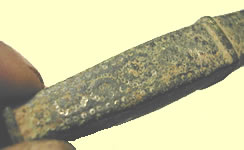
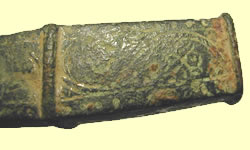
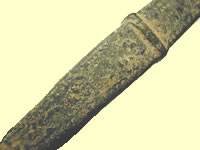
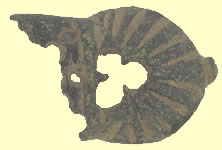

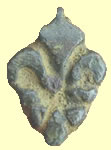




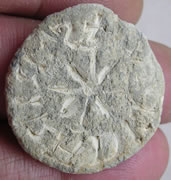
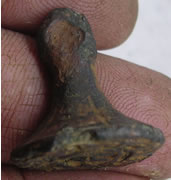

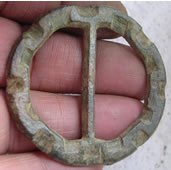
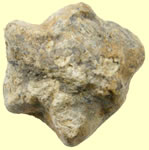
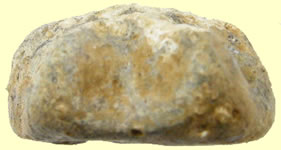


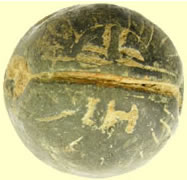
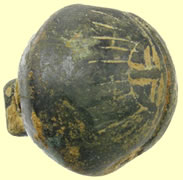


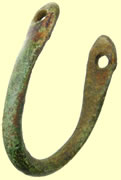


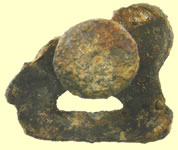

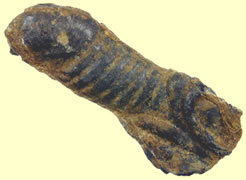 I received a mail yesterday where three export applications have potential treasures highlighted by the advisors at export duty. I will be taking them to the museum next week as I already have a meeting booked to look at a bunch of our interesting finds. More details and names on members forum. Some great bonus do dads in Cal Glen's export pouch including what appears to be anther Roman Phallus symbol mount posted below. I will be taking it to the museum next week for their views as the material does not appear to be typical Roman. I already have another pewter type material Phallus to take along. I will be focusing our attention more closely to spindle whorls next season as I did not realise the domed shaped one's are Roman. I will adding them to our new
I received a mail yesterday where three export applications have potential treasures highlighted by the advisors at export duty. I will be taking them to the museum next week as I already have a meeting booked to look at a bunch of our interesting finds. More details and names on members forum. Some great bonus do dads in Cal Glen's export pouch including what appears to be anther Roman Phallus symbol mount posted below. I will be taking it to the museum next week for their views as the material does not appear to be typical Roman. I already have another pewter type material Phallus to take along. I will be focusing our attention more closely to spindle whorls next season as I did not realise the domed shaped one's are Roman. I will adding them to our new 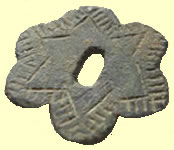
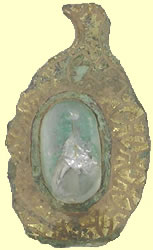


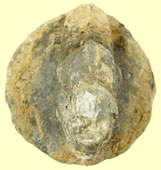
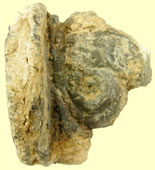
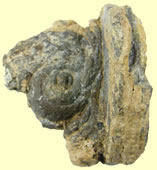
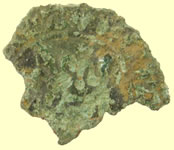
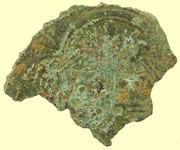


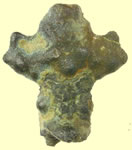
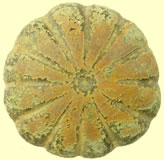
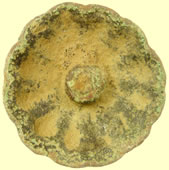

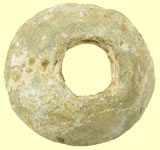
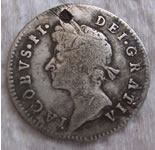

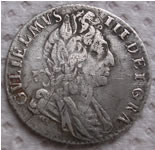
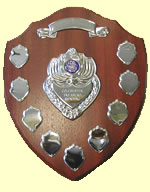
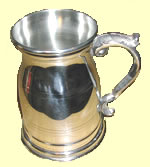 I can get back to processing the last half a dozen export applications. Once they are done I can total up to see has won
I can get back to processing the last half a dozen export applications. Once they are done I can total up to see has won 

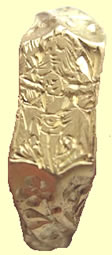


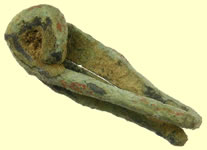


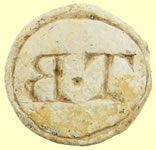
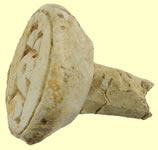
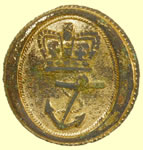
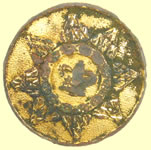


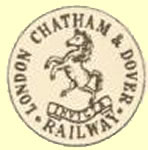


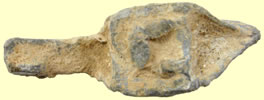
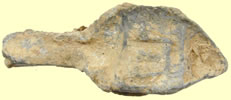






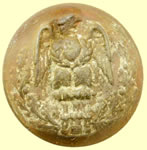
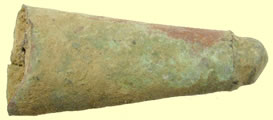


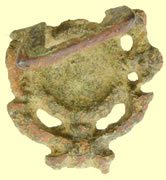
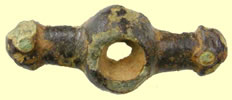

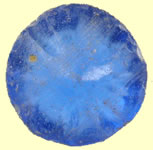
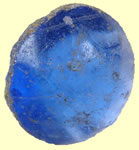
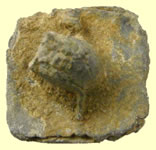
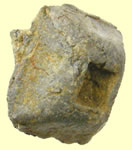

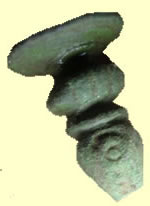
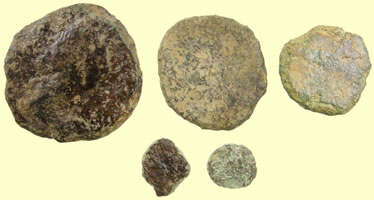 One of our farmers is adamant that there was once a Roman fort on his land. After 3 years of searching it we have not found any evidence to support the claim and the museum have no record of a fort or settlement having being there. We started searching a brand new plot of land just a month before the end of the season. This site is 17 fields and adjacent to the 'old' land, we have briefly covered half a dozen of the fields so far. What is apparent is this is possibly our best ever Roman site we have found. Apart from a large number of grotty 1st to 4th C Roman coins there are a very diverse set of artefacts in the find pouches I am going through. The obvious pieces like fibula brooches and votive offerings are photographed while the hunts are underway but the fragments and do dads are not looked at closely until later. Reviewing the finds so far from that site supports a military presence, metal working and personal artefacts. There are numbers of Roman looking nails but unfortunately
One of our farmers is adamant that there was once a Roman fort on his land. After 3 years of searching it we have not found any evidence to support the claim and the museum have no record of a fort or settlement having being there. We started searching a brand new plot of land just a month before the end of the season. This site is 17 fields and adjacent to the 'old' land, we have briefly covered half a dozen of the fields so far. What is apparent is this is possibly our best ever Roman site we have found. Apart from a large number of grotty 1st to 4th C Roman coins there are a very diverse set of artefacts in the find pouches I am going through. The obvious pieces like fibula brooches and votive offerings are photographed while the hunts are underway but the fragments and do dads are not looked at closely until later. Reviewing the finds so far from that site supports a military presence, metal working and personal artefacts. There are numbers of Roman looking nails but unfortunately 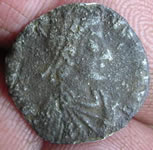

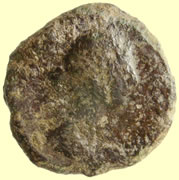
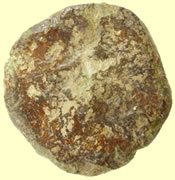
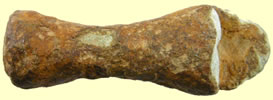
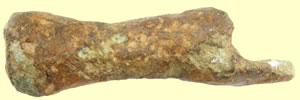
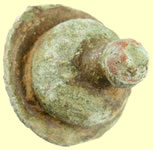

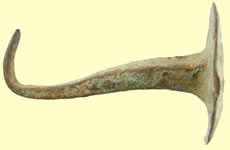






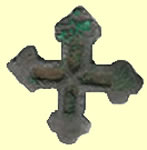

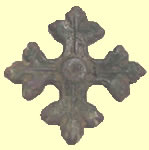
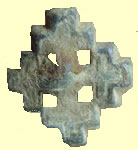


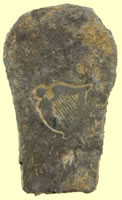


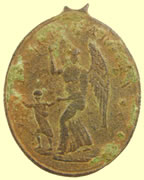


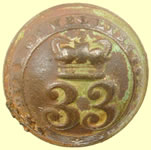





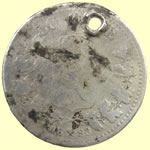
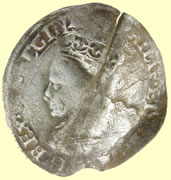
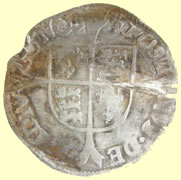


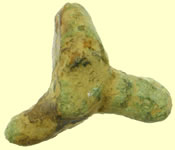
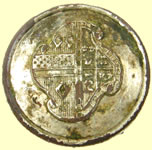

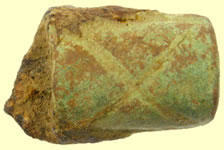

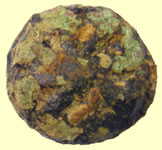


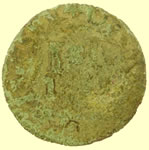



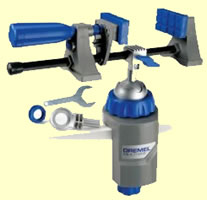


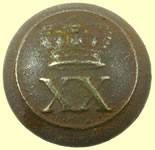
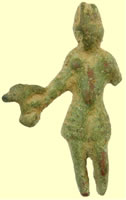
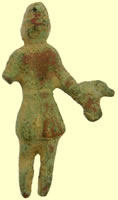


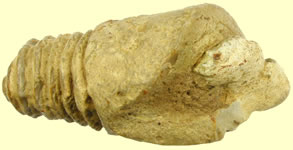

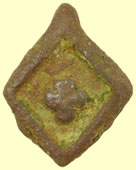
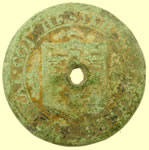

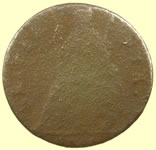


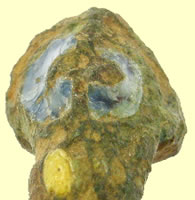
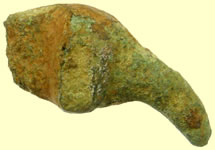

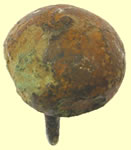
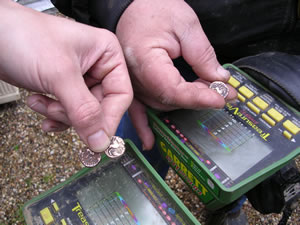
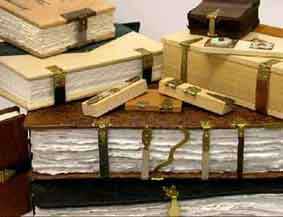
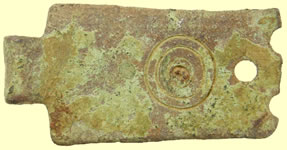

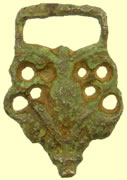
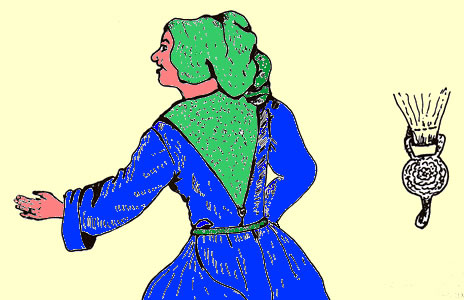



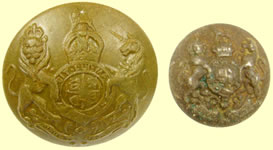

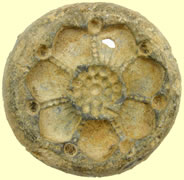


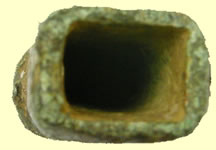



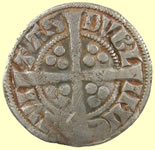
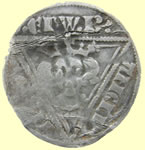
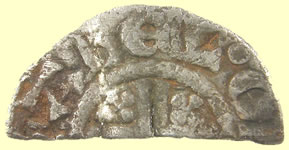
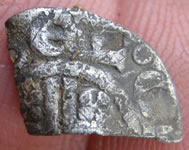
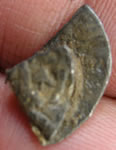



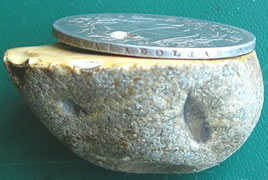
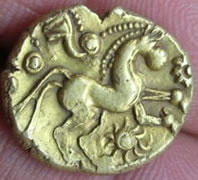





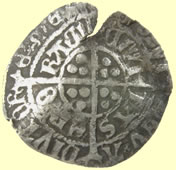
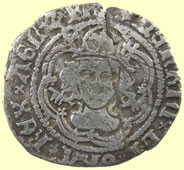
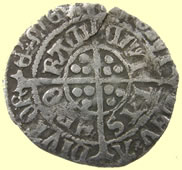

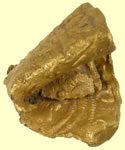
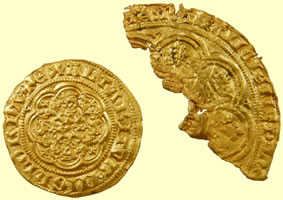


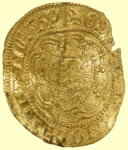

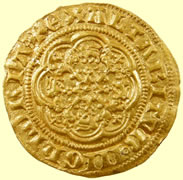



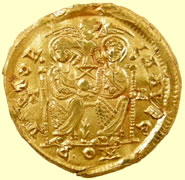



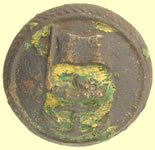

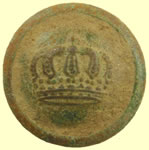
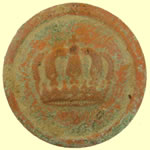
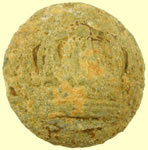

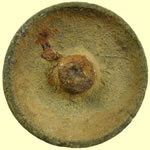



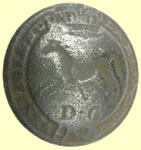
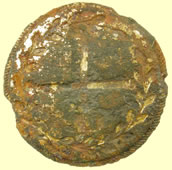
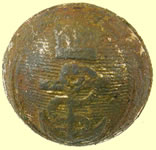
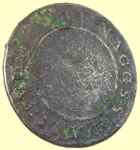


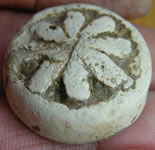

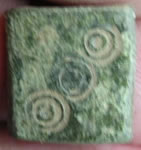

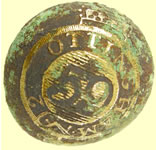
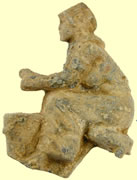

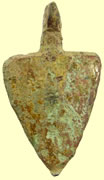
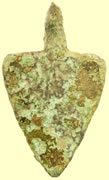
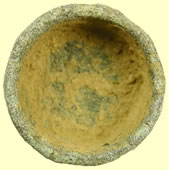
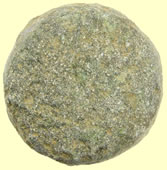
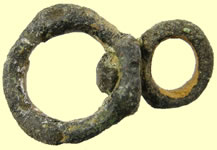








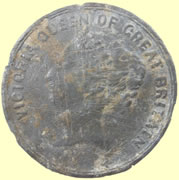
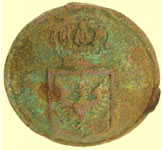




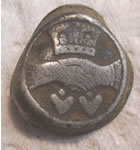
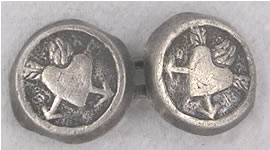







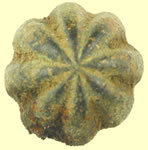
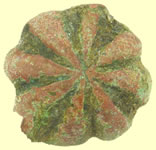
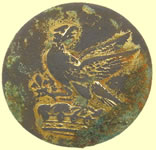

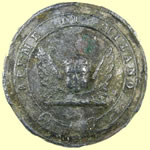




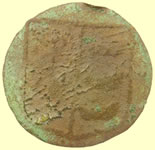

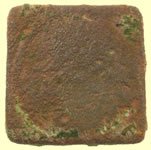

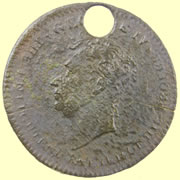
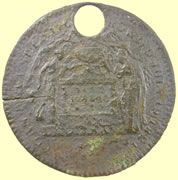
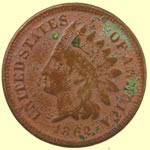
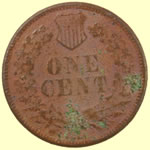




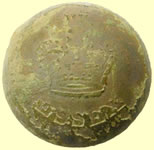

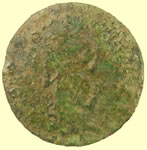


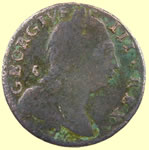

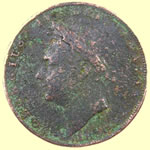
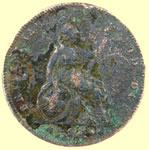

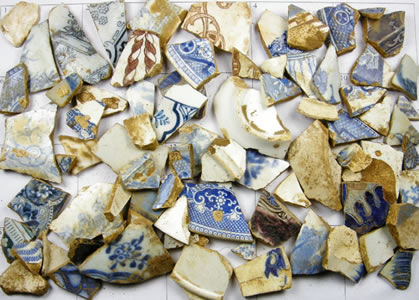





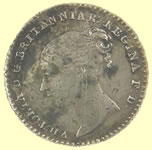

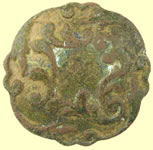
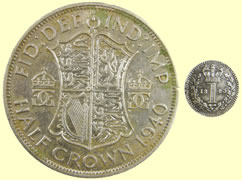


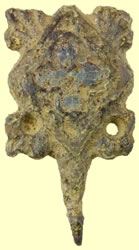

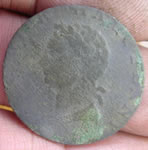


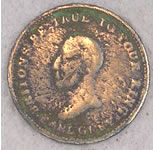
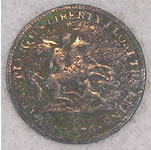

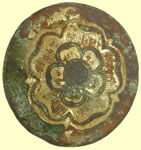

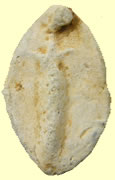
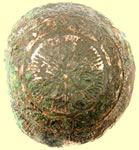

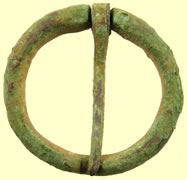



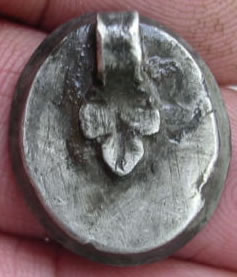





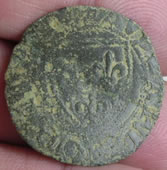
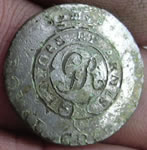



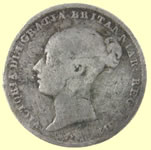

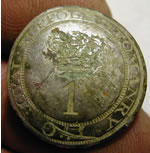

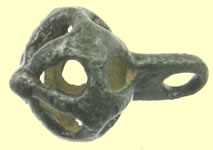

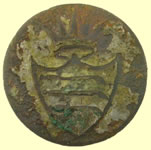
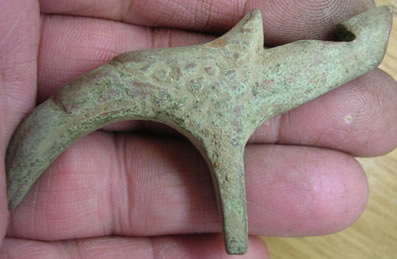


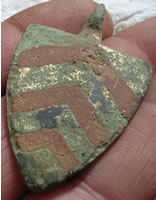

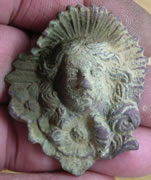


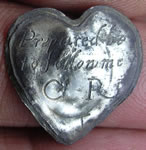

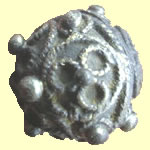
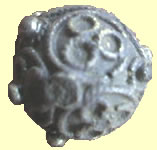
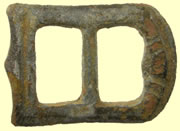

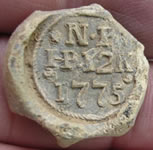
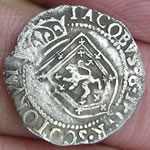
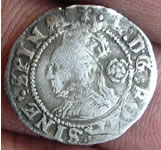



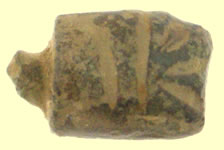




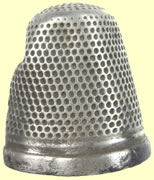
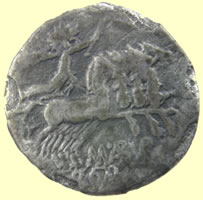


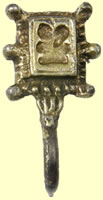
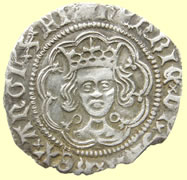


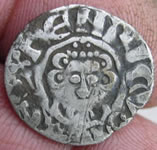
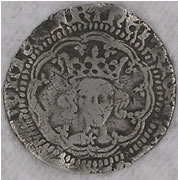
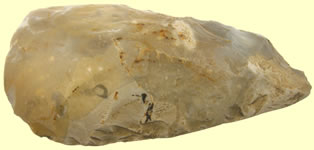


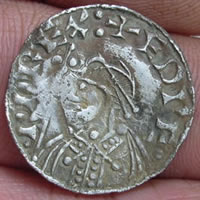
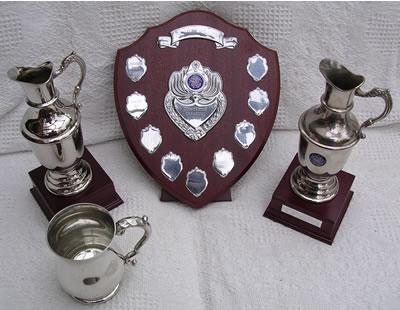
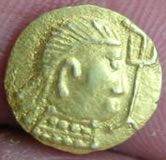
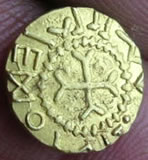



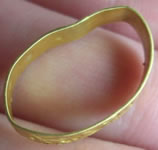


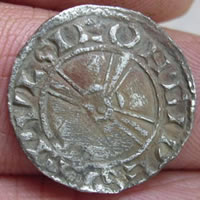
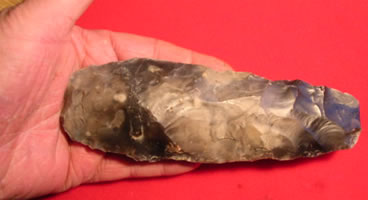
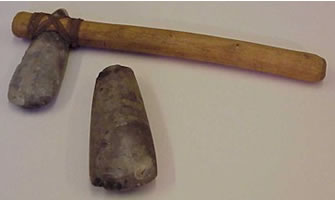
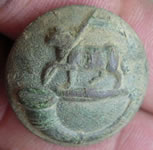
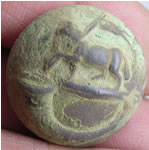




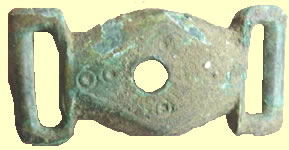
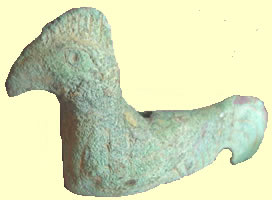



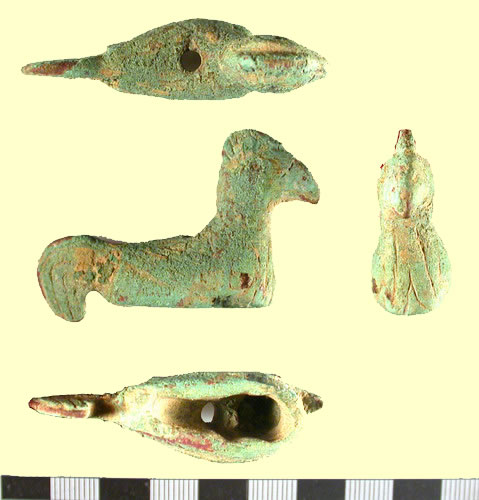

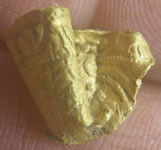

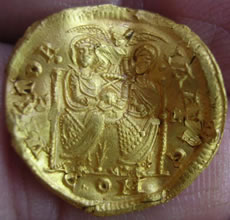
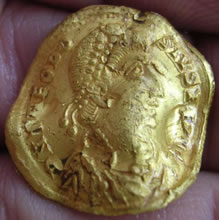

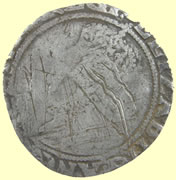

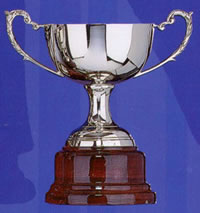 Billericay Mark has been awarded the 'Wayne
Otto Memorial cup' for the detectorist with the best attributes during
the season. A very popular vote for a guy that cannot do enough for the other members with help, advice and the patience of a saint, congrats mate.
Billericay Mark has been awarded the 'Wayne
Otto Memorial cup' for the detectorist with the best attributes during
the season. A very popular vote for a guy that cannot do enough for the other members with help, advice and the patience of a saint, congrats mate.



 The guys have just one day to go to the end of the season and are still on a Celtic gold mission. If they get one then they will have thoroughly deserved it for showing such dedication with their consistent gridding. They have picked up a few nice do dads along the way which I have just posted onto the
The guys have just one day to go to the end of the season and are still on a Celtic gold mission. If they get one then they will have thoroughly deserved it for showing such dedication with their consistent gridding. They have picked up a few nice do dads along the way which I have just posted onto the 
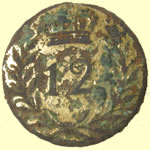

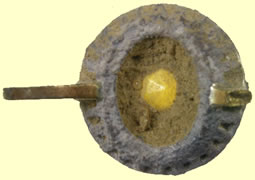
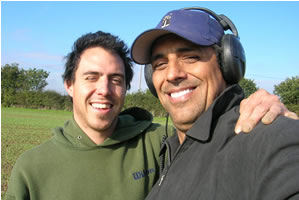





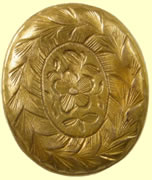



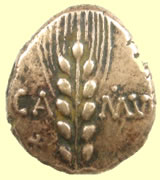
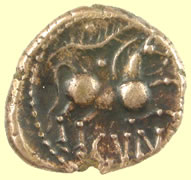
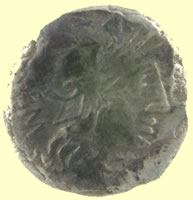





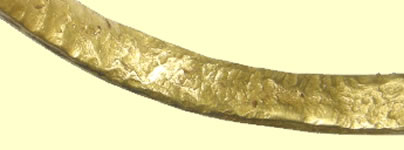
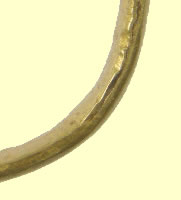




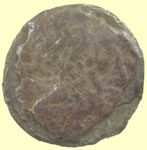
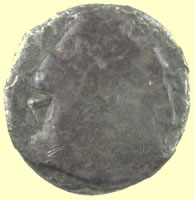


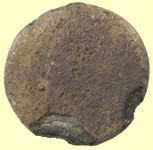

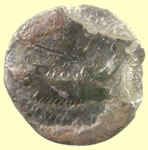
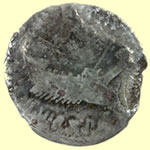
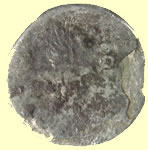
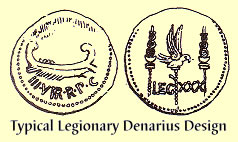
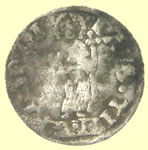


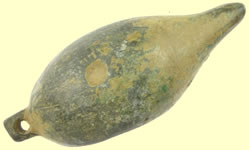
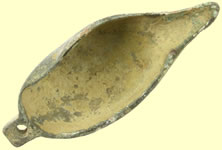




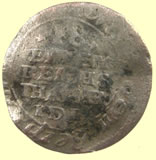



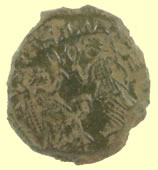




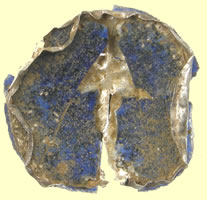
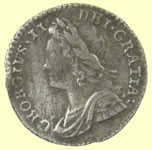
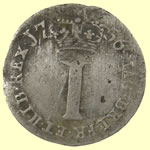
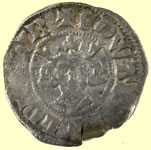
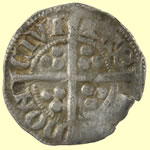

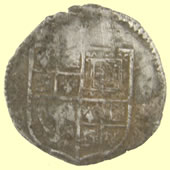
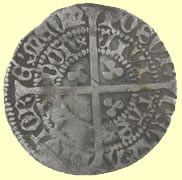
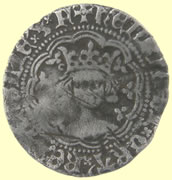
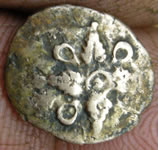
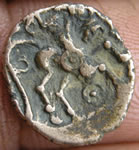
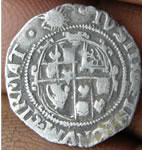
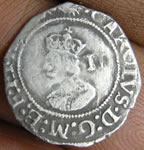
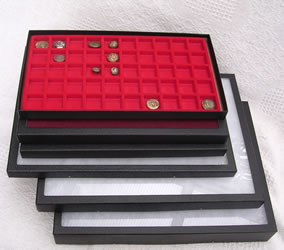



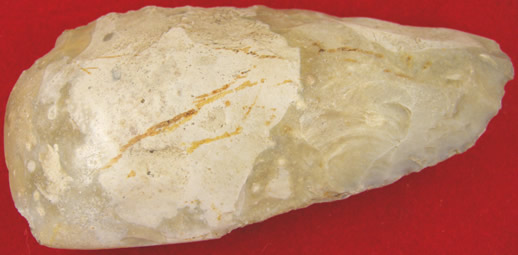





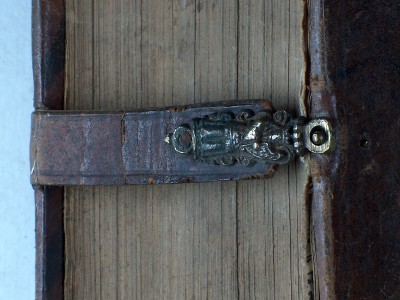

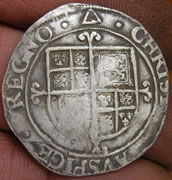
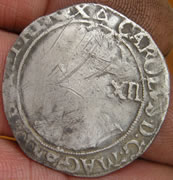
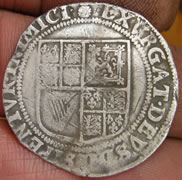


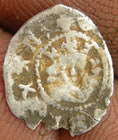

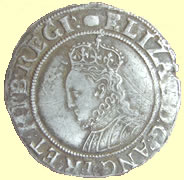
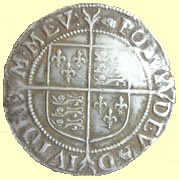
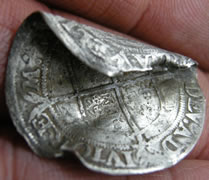
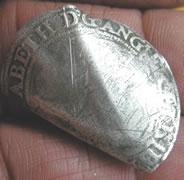




 mega pixal camera has arrived but the light box, cube, stand and daylight spot lights will not be here until next week. This should make a significant improvement to the quality of the pictures of the artefacts and coins.
mega pixal camera has arrived but the light box, cube, stand and daylight spot lights will not be here until next week. This should make a significant improvement to the quality of the pictures of the artefacts and coins.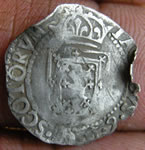
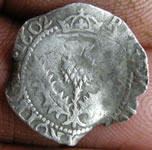
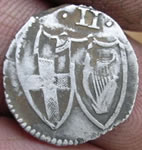
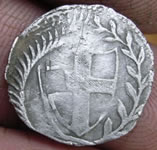
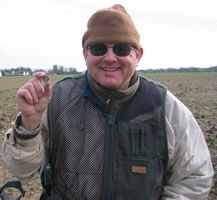
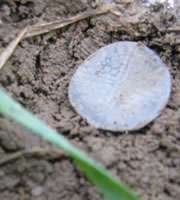

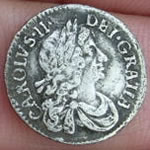

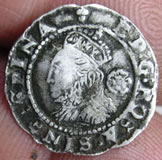
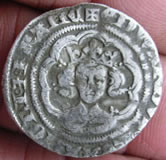

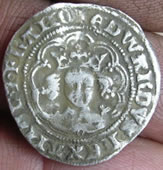
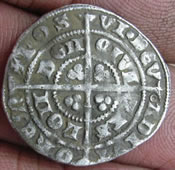

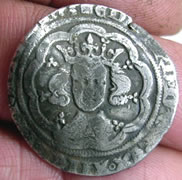
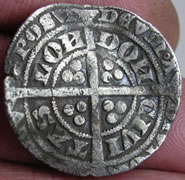


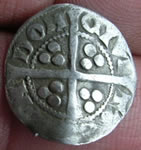


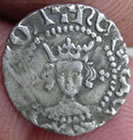
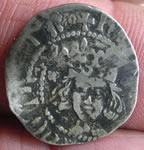

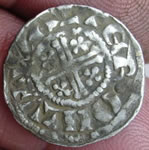

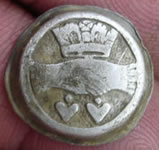



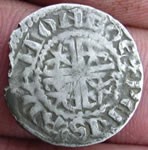
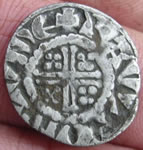
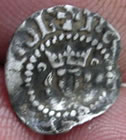



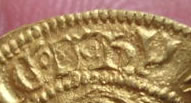
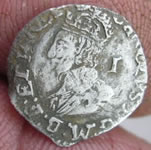
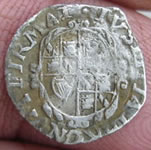

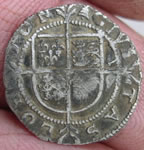

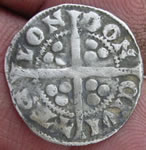
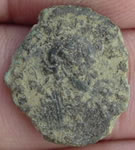

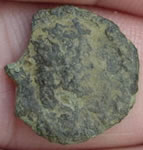
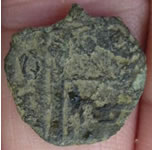
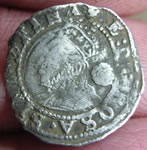
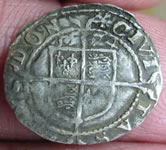
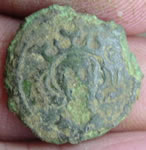
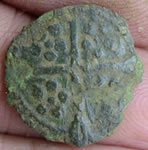



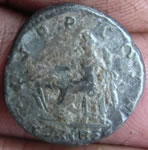


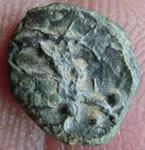


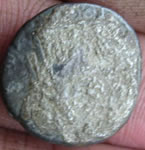
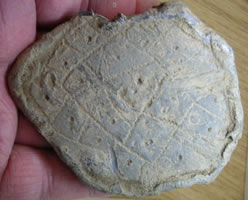
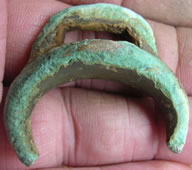

.jpg)
.jpg)
.jpg)
.jpg)
.jpg)
.jpg)

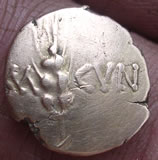
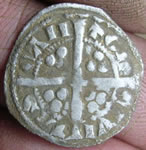
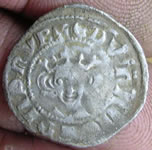

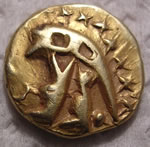
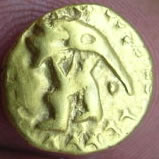
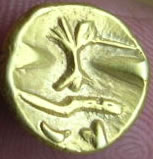


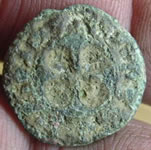

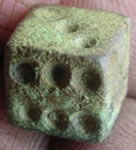

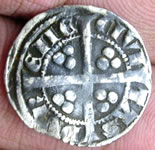


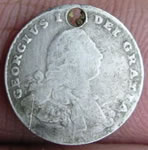
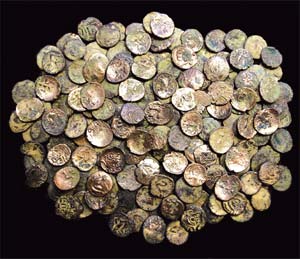


 Ron's dates 3rd to 17th Oct 08
Ron's dates 3rd to 17th Oct 08

